Страница 2: BitFenix Prodigy — внешний вид
Корпус Prodigy за 70 евро выделяется среди других моделей в нашем тестировании белой окраской. Но BitFenix предлагает и более заметный чёрный вариант корпуса. Впрочем, дизайн Prodigy явно нацелен на индивидуальность. Крупные изогнутые рукоятки из пластика (BitFenix говорит не о пластике, а о материале FyberFlex Composite) служат и ручками для переноски, и ножками для придания устойчивости корпусу.
Габариты 250 (Ш) x 404 (В) x 359 мм (Г) у Prodigy довольно крупные для корпуса Mini-ITX. Но это объясняется задачей, которую преследовала BitFenix с данной моделью: вы можете устанавливать мощное железо, доступны и различные опии охлаждения. Передняя панель вмещает один отсек для стандартного 5,25″ оптического привода.
В отличие от чёрного корпуса, белая версия по эстетическим причинам лишилась сетки на передней панели. Это, конечно, ухудшает эффективность работы переднего вентилятора, но зато и шум спереди оказывается чуть тише.
Чтобы не нарушать цельный внешний вид, BitFenix решила перенести панель ввода/вывода на боковину корпуса, вы получите два порта USB 3.0 и звуковые разъемы рядом с яркими синими индикаторами состояния и тумблерами. Это приводит к некоторым сложностям при сборке корпуса, кабели следует подсоединять до закрытия боковой панели.
Левая панель перфорирована. Поэтому видеокарта может напрямую получать холодный воздух снаружи корпуса. Но BitFenix отказалась от противопылевого фильтра.
Система охлаждения Prodigy состоит из двух 120-мм вентиляторов, смонтированных за передней панелью и на задней стенке. Два вентилятора BitFenix Spectre работают с приятно низким уровнем шума. Если вам требуется большая эффективность охлаждения, то в корпусе есть место для ещё трёх вентиляторов: за передней панелью можно смонтировать второй 120-мм вентилятор или модель большего размера. Ещё два крепления для 120-мм вентиляторов предусмотрены в крышке корпуса.
Но вместо них вы можете вставить и 240-мм теплообменник (либо смонтировать его спереди корпуса после снятия стойки HDD). Так что корпус Prodigy оказался единственным в наших тестах, подходящим для установки СВО.
Вид сзади позволяет получить представление о внутренней раскладке. Материнская плата монтируется горизонтально. Это обеспечивает достаточно места для установки высоких кулеров-«башен». Для последних доступно 16,5 см, так что корпус Prodigy лидирует в данном отношении. Так что симпатичный алюминиевый корпус BitFenix может стать основой для высокопроизводительной сборки mini-ITX (его концепция несколько напоминает мини-корпус Cubitek).
<> Тест и обзор: четыре корпуса mini-ITXBitFenix Prodigy — интерьер, спецификации
FINAL THOUGHTS:
Just like its little brother Prodigy, The BitFenix Prodigy M is a good looking case. It is an exact replica of the Prodigy exterior wise, but from the inside it is totally different. The PSU mounted at the front is kinda awkward since it is blocking a huge portion of the case which is supposedly the best part where the PC could receive a good ventilation. I’ve had problems installing my HD 7950 since I am using a 180mm CM Silent Pro M2 but having a standard 150mm PSU will free you from those interferences. Using tower coolers wouldn’t be a problem with this case. You can install those mammoth tower coolers like the Noctua NH-D14, CM V8-GTS and even the Phanteks PH-TC14PE. Just like a full-sized PC case, you can install a 240mm radiator on the top, 120mm or even a 140mm radiator on the rear.
Despite of its small issues regarding airflow and clearance between GPU and PSU, the Bitfenix Prodigy M is still a great case. Price wise, at around 4,000 Pesos, you can have a case which is designed for perfection. Modern yet elegant styling, putting one of these in your living room will be an eye-catcher to your visitors.
PROS
- Looks very appealing
- SLI/Crossfire support
- Solid build quality
- Price
- Highly expandable
CONS
- Requires careful selection of component to be installed
- Airflow not ideal
This review and build guide is an article provided by Carlo “Euro_Bucks” Infante; A Power User, PC enthusiast, and a gamer dad.
BitFenix Prodigy M
-
7/10
PERFORMANCE — 7/10
-
8/10
BUILD QUALITY — 8/10
-
7/10
FEATURES — 7/10
-
8/10
AESTHETICS — 8/10
-
8/10
VALUE — 8/10
7.6/10
Summary
Just like its little brother Prodigy, The BitFenix Prodigy M is a good looking case. It is an exact replica of the Prodigy exterior wise, but from the inside it is totally different.
BitFenix Prodigy M Micro-ATX Chassis
From an aesthetic point of view, nothing about the Prodigy M should shock you; it is essentially the same design as its predecessor, since both cases share dimensions as well. The handles define the shape at the top and bottom, and the Bezel sort of floats in the middle with its black trim, logo, and the single bay cover at the top.
The top of the chassis has a mesh panel that unclips and is completely removable. Under this there is room for two 120mm fans to be installed via holes on both side rails.
The left side of the chassis is the Plain Jane side of this design. Of course, the curve of the handles and the top and bottom do detract from the basic square design inside, but access to the inside of the chassis is on the other side.
With a glance at the back of the Prodigy M, we can immediately see the motherboard is inverted inside. With five expansion slots at the top to fill, and the rear I/O panel needing to go in, we see a plug this time, rather than access for PSU installation.
The right side of the chassis is the side of the Prodigy M you will likely see most, as this is the side used to gain access to the inside of the chassis. While the side panel is mostly identical to the other side, this time we do have an I/O panel near the front edge of the chassis.
In this I/O panel we find the large power button just above the rectangular reset button. Next is a pair of LEDs on the left, with a pair of HD audio jacks next to them. That leaves the pair of USB 3.0 ports at the bottom as the last of the front panel connectivity.
We find that a magnetic plastic panel has been placed under the chassis. The PSU mounting location is exposed to the right, but if you do not care to cool the chassis from the bottom, it can be entirely blocked off with this.
Removing the cover, we see that the bottom of the chassis offers a lot of mesh for air flow. We can also see options for fans and storage incorporated into this design.
BITFENIX PRODIGY M EXTERIOR:
The BitFenix Prodigy M is very identical to its M-ITX brother, the Prodigy. It sports an unfiltered mesh panel on the front with a shiny BitFenix logo at the bottom and a blank 5.25 bay at the top where you could install an ODD or a fan controller.
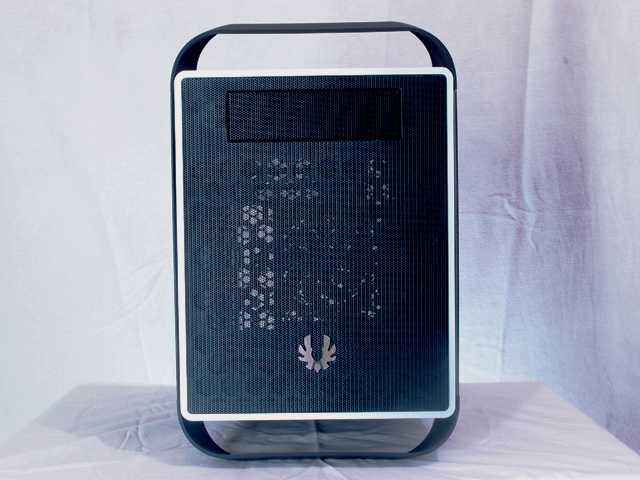
From this angle you will see that your motherboard will be installed in an inverse mounted position. The five mesh-covered PCI slots features a tool-less mechanism so you could install you video card, sound card etc. without screws. There’s a 120mm/140mm fan mount with a pre-installed 120mm fan I must add, and since the PSU is front mounted, the power socket is located at the bottom of the I/O panel.
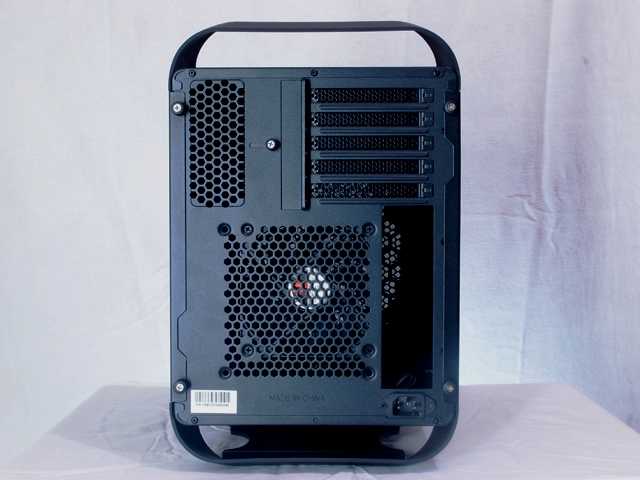
Here you can see the Fiberflex handle/feet extensions that you might think weak because it is made of plastic. It actually can carry the weight of your PC with all parts installed.
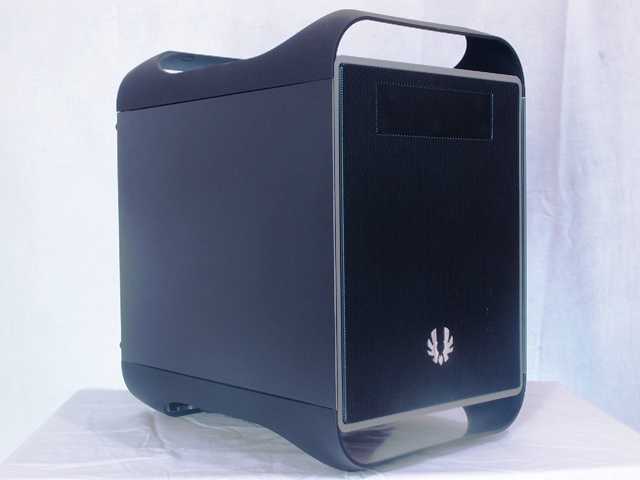
The side panels are pretty much identical thus making it interchangeable. You can swap the one with the front I/O panel on the other side. Fiberflex handle/feet are coated in the SofTouch surface treatment, while the other surfaces are painted in high-standard coating.
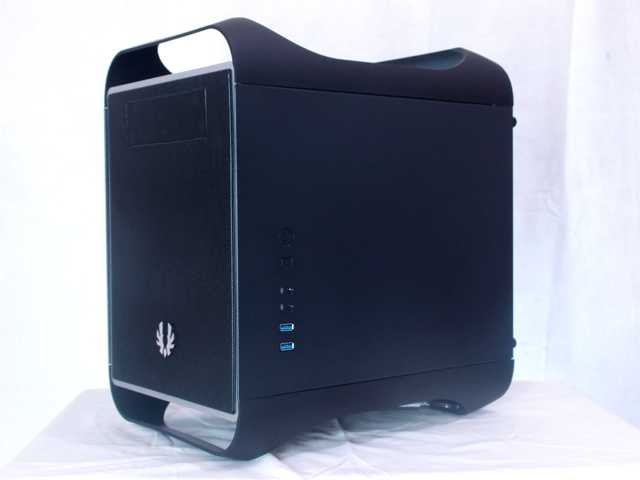
The top portion features the Fiberflex handle coated in SofTouch finish, very useful when carrying your PC to a LAN party or somewhere else.
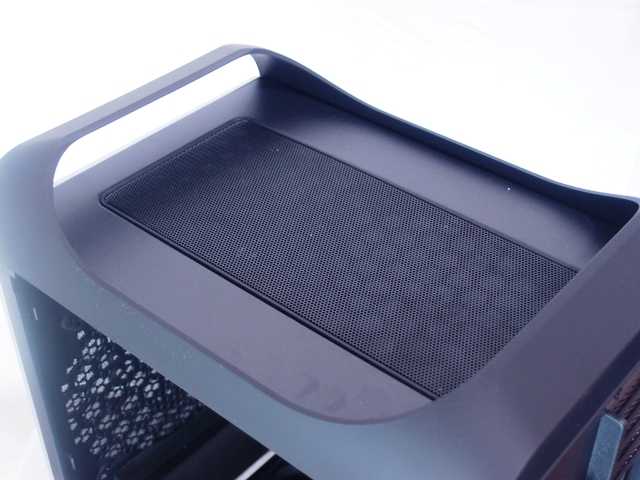
Removing the unfiltered mesh cover will show you 2 X 120mm mounts for auxiliary fans or a 240mm radiator.
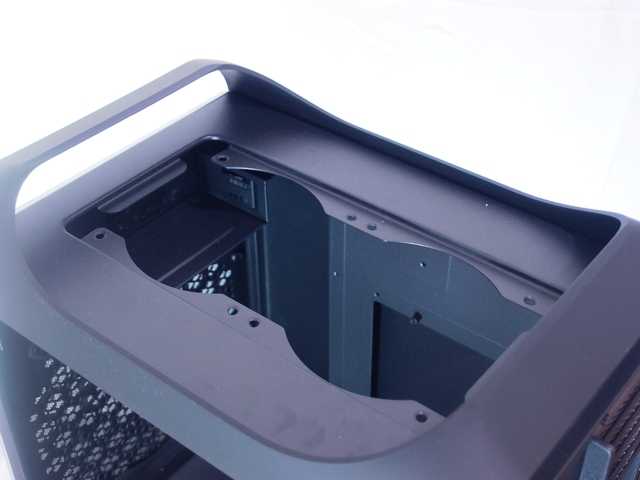
On the underside you’ll see the PSU exhaust. The right part is a heat shield that you can easily remove since it’s just held in place by magnets.
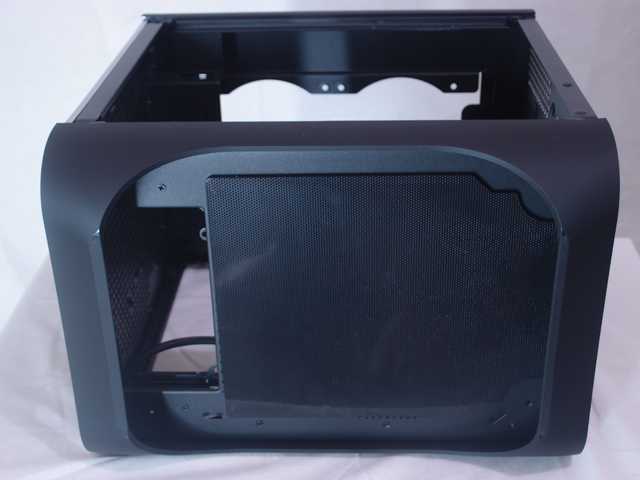
Removing that heat shield you’ll find two hard drive mounts, two 120mm fan mounts and a huge 230mm fan mount.
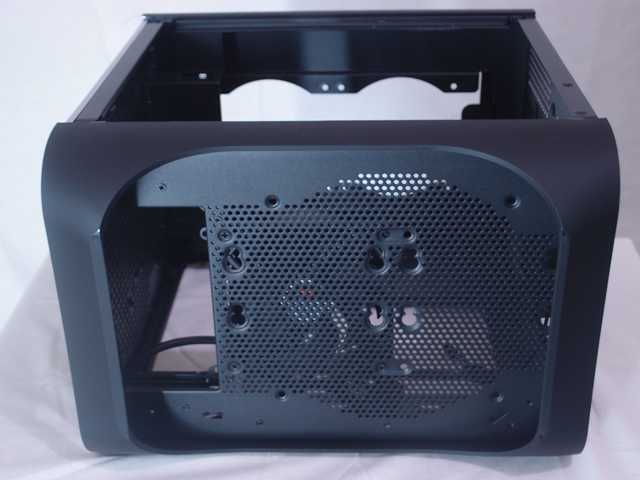
The side panel is the location of the front I/O panel. It’s on the side so I guess it should be called the side I/O. Included with it is the the wiring for power, reset, activity LEDs, the audio jack ports and 2x USB 3.0 ports. There is also a plastic bracket where you could mount two 2.5” hard drives.
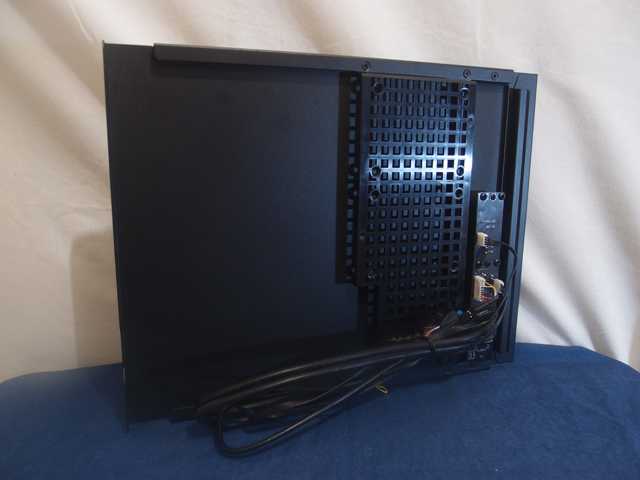
Packaging and Closer Look
The photos above show the retail box which houses the BitFenix Prodigy M. It has thick foams and a plastic covering that protects the case while it is in transit. You can also see its features and specifications on the rear and right sides of the box.
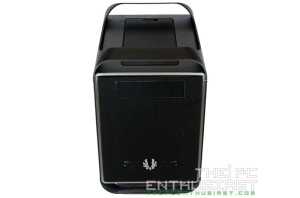
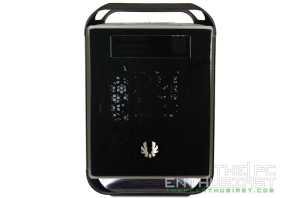
The BitFenix Prodigy M black version features a full front mesh panel where fresh air comes in specially for the power supply. Due note however that the white version of the Prodigy M doesn’t come with a front mesh panel; instead you get a plain white panel that doesn’t have any holes except on its sides. There’s a 5.25″ external drive bay just in case you want to install an optical disk drive or a fan controller.
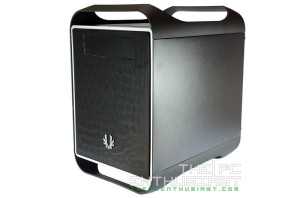
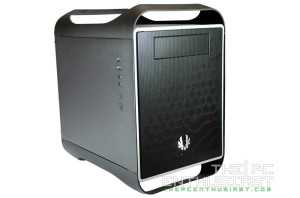
Just like the original Prodigy, the Prodigy M features that Mac Pro looking carrying handles called FyberFlex Composite handles. These handles are flexible but will not break easily even if you have installed your components inside the case. But personally I think BitFenix should make these handles not flexible instead. I’ll feel much secure carrying this case with my components inside if the carrying handles would not flex at all. Meanwhile, those handles have a SofTouch surface treatment, giving it a nice rubberized-like feel when you touch it.
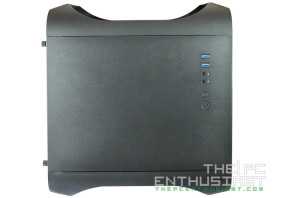
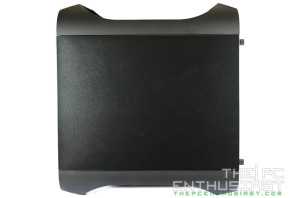
The front I/O panel of the BitFenix Prodigy M is located on one of its side panel. But wait, something is wrong with the photos above. Notice that the reset button (letter R) is inverted? That’s because this panel should be on the other side and not on the left side. I’m not sure why it was primarily placed there, perhaps this is just an isolated case. But this basically gives us an idea that the side panels are interchangeable.
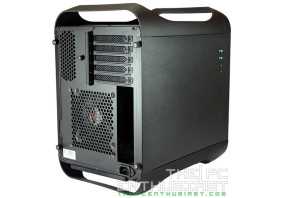
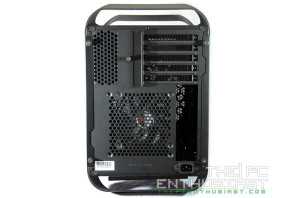
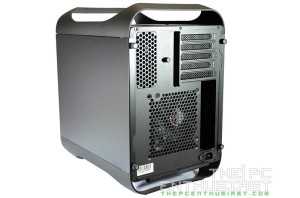
On the back portion of the Prodigy M is where you will see the obvious difference compared to its predecessor. There’s a 120mm or 140mm fan exhaust, a rear I/O panel opening, and there are five expansion slots. This is a good thing since there are some micro ATX cases that only come with 4 expansion slots. The problem with 4 expansion slots is that not all motherboard manufacturers placed their PCIE slot on their motherboard in the same manner. There are micro ATX motherboards where the 2nd PCIE (x16 or x8) slot is located at the very bottom or end of the motherboard. And that would be a problem if the case has only 4 expansion slots. Meaning you can’t do an SLI configuration with that kind of setup. But that will not be a problem with the Prodigy M at all.
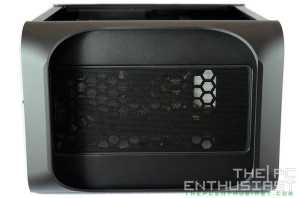
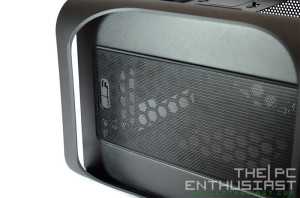
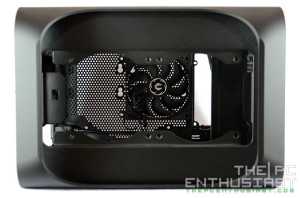
There’s a removable mesh ventilation on the top of the BitFenix Prodigy M. You can install up to two 120mm fan or 240mm radiator on the top portion. But should you decide to use this, you will not be able to do an SLI or CrossFireX since the fans or radiator will consume the space intended for the second graphics card.
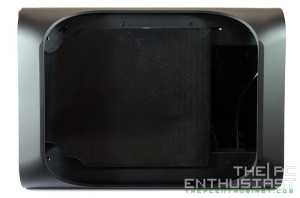
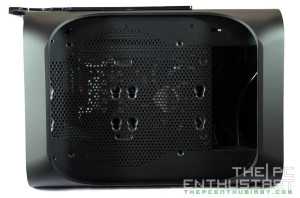
Below the Prodigy M, is a huge air ventilation protected by a removable heat shield. The heat shield actually prevents the heat coming from the exhaust of the power supply to go back in. This heat shield is magnetized so you don’t need to screw or unscrew it. You can also install up to 230mm fan at the bottom portion or up to 2x HDD or SSD drives.
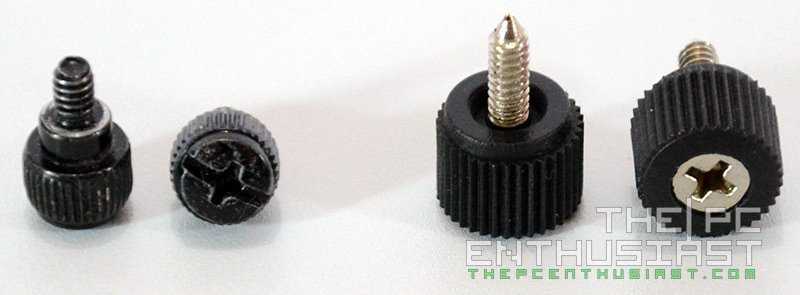
I noticed that BitFenix is using thumbscrews that are partly plastic and has pointed tips. I would appreciate it more if BitFenix would use an all metal thumbscrews (the one on the left hand side of the photo above) or something like anodized thumbscrews instead. This way, it would look better aesthetically.
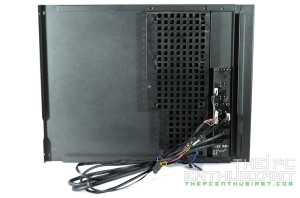
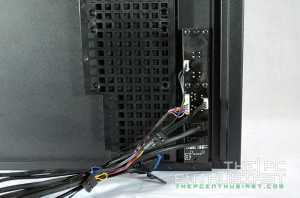
Moving on, the side panels of the BitFenix Prodigy M are very sturdy and doesn’t easily flex at all. In the right side panel is where the front I/O ports are located. You get a power button, a reset button, two USB 3.0 ports as well as mic in and audio out ports. You can also install up to two SSD on this side.
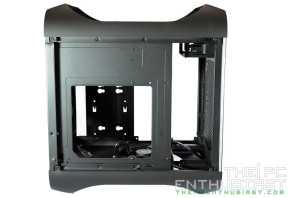
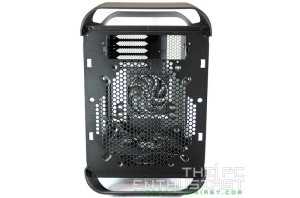
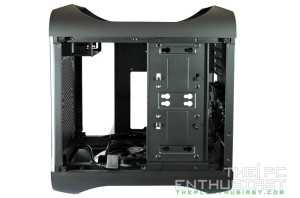
There’s a huge hole on the motherboard tray for easily installation of third party CPU coolers. In front of the case you see there are mounting holes for fans but you can’t actually use this area because this is occupied by your power supply. On the right portion, you see a small tray where you can install up to 3x SSD or 2x 3.5″ hard drives. This tray is also removable in case you don’t plan to install any drives and to free some space.
Технические характеристики
| Материал корпуса | сталь, пластик |
| Поддерживаемые форм-факторы материнских плат | mini-ITX |
| 5.25» слотов | 1 |
| 3.5» слотов | 5 |
| 2.5» слотов | 9 |
| Корпусные вентиляторы | 2x 120х25 мм |
| Максимальная длина видеокарты | 335 мм |
| Максимальная высота процессорного кулера | 175 мм |
| Блок питания, расположение | PS2 длинной до 180 мм, снизу |
| I/O-панель | кнопки power и reset |
| 2x USB 3.0 | |
| 2x 3.5-мм jack | |
| Дополнительно | пылесборные фильтры |
| Габариты (ШхВхГ) | 250x404x359 мм |
| Средняя цена | 3 500 руб. |
| Уточненная стоимость |
Собственно говоря, вот мы и добрались до Prodigy. Внешне корпус напоминает уменьшенную копию Mac Pro (из-за пластиковых ножек-дужек). Если включить фантазию, то можно у героя сегодняшнего тестирования найти немного общего и с Power Mac G4 Cube. К слову, за надежность пластмассовых ножек волноваться не приходится. Набитый до отказа «железом» корпус был спокойно транспортирован в фотостудию. И обратно. Но использовать Prodigy в качестве своеобразного пуфика мы не рекомендуем. Такую красоту прятать под столом — кощунство! Правда, при всей миниатюрности корпус получился весьма широким.
Ножки, а также передняя панель Prodigy имеют такое приятное покрытие soft-touch! В верхней части «морды» находится отсек для установки оптического привода. Оранжевый «резак» вы вряд ли отыщете в рознице. Однако черный привод будет очень даже гармонично смотреться. Больше на передней панели ничего нет.
Передняя панель BitFenix Prodigy
Органы управления и внешние разъемы сгруппированы вместе и расположены на боковой правой крышке. Так, у Prodigy в наличии два USB 3.0 порта, столько же 3.5-миллиметровых джеков для подключения аудио и микрофона, плюс кнопки включения и перезагрузки. В комплекте поставки также идет переходник с USB 3.0 на USB 2.0.
I/O-панель BitFenix Prodigy
Боковая крышка BitFenix Prodigy
Левая боковая крышка напоминает дуршлаг. Воздуховод в виде большого числа маленьких отверстий расположен вдоль всей стенки. Повторимся, в продаже есть вариация Prodigy с боковым окошком (синего и зеленого цветов).
Если передняя панель и ножки выполнены из пластика, то весь остальной корпус — из стали. Качество материала можно охарактеризовать как высокое. Во время сборки/разборки люфта и деформации элементов каркаса мы не обнаружили. Покраска тоже на уровне.
Боковая крышка BitFenix Prodigy
В нижней части задней панели найдётся «окно» для установки блока питания. Чуть выше есть еще одно, но уже предназначенное для заглушки материнской платы. В верхней же части располагается место для установки корпусного вентилятора. По умолчанию там установлена 120-миллиметровая крыльчатка, однако есть возможность инсталлировать и 140-миллиметровый вентилятор.
Задняя панель BitFenix Prodigy
Сверху корпуса размещена прямоугольная пластиковая крышка. Она выполняет две функции. Во-первых, сняв ее, мы получаем доступ к крепежным отверстиям, при помощи которых инсталлируется радиатор системы водяного охлаждения. Во-вторых, она играет роль пылевого фильтра.
Верхняя крышка BitFenix Prodigy
Packaging
As with all of BitFenix chassis to hit our labs lately, we see the plain brown cardboard with black printing that saves money on something we typically throw away anyways. We see the large BitFenix logo, the Prodigy M naming, and of course, they also display the web address at the bottom.
Spinning the box, we are now looking at the right side, where BitFenix has chosen to apply their product sticker. This gives us the naming of the BFC-PRM-300-WWXKW-RP; if it were black, the W’s would be replaced with K’s.
The back offers quite a bit when it comes to what gets printed here. BitFenix offers their potential customers knowledge of what is contained inside with three images of the chassis, opened and closed, along with eight key features positioned around them.
On our last panel for the Prodigy M we find one more rendering of the chassis in the middle, and below that is the specifications chart, and it is nearly identical to what we just went over.
In this instance, the Prodigy M comes packaged with foam on the top and bottom. This is to better protect the FyberFlex handles. Along with the thick Styrofoam used in those, a plastic liner under it allowed our Prodigy M to arrive in perfect condition, without a scratch or blemish to be found.
THE PROBLEM:
Having a long PSU and a long video card at the same time is a big no for this case. Notice that the video card’s PCB is almost touching the surface of the PSU.
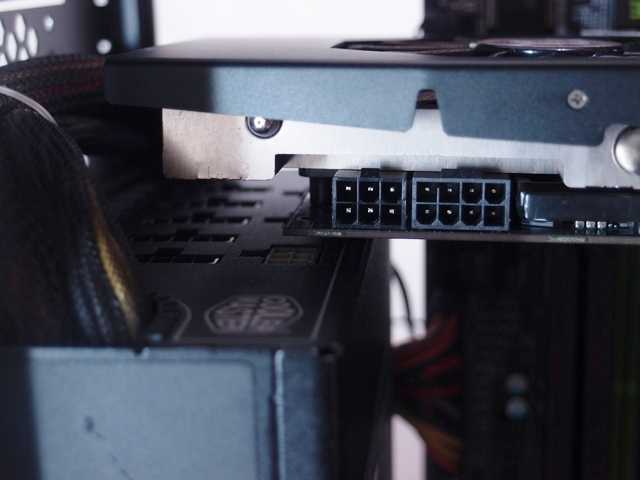
It also blocks the sockets of the PSU so it is impossible for me to install the video card this way. If you’re going to buy this case, make sure you have a standard-sized PSU or else you’ll going have a limited option for the size of your GPU.
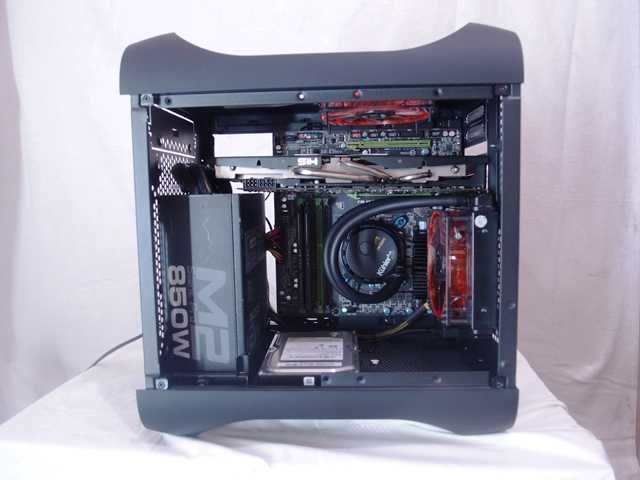
Since I don’t have an extra standard-sized PSU around, I just resorted to installing the video card on the second PCI-E slot of the motherboard which is not recommended since you will be running your video at a slower PCI-Ex8 lane.
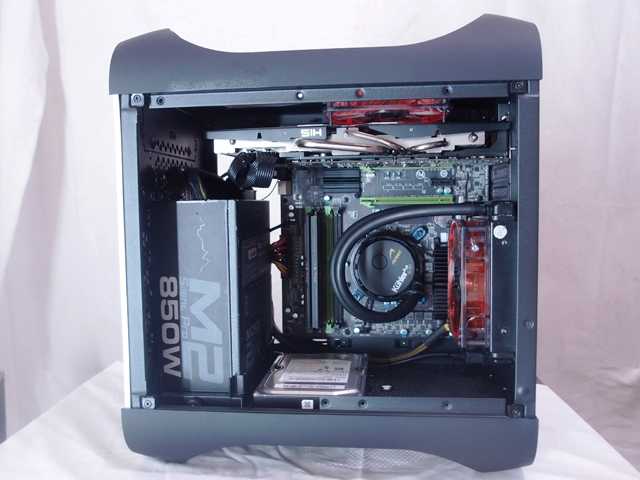
I always thought that the more the case is compact, the more you’ll get headache managing its cables. Surprisingly, cable management is easy to do with the Prodigy M. With the PSU mounted in this manner, the 24-pin socket of the board and sockets for the video card are just centimeters away.
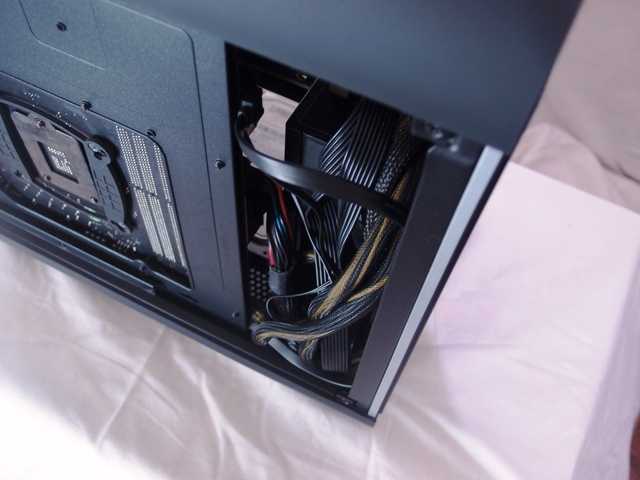
Despite the lack of space and cable tie points at the back part of the chassis, there is enough room beside the PSU where you could stuff all those snakes.
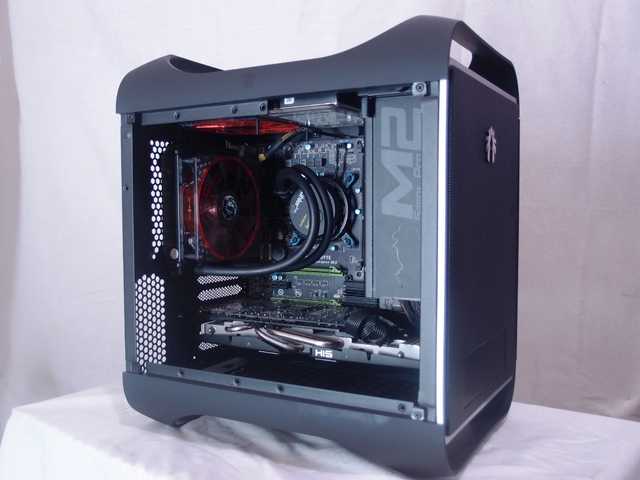
Case Build and Finished Product
First off, we went ahead and added the PSU bracket to our power supply. It is a tight fit, but with just a bit of force, we got it in the PSU. We soon realized that we had it on so that the fan was pulling from the chassis interior, so we swapped it around later so that we could use the front of the chassis to supply air to the PSU fan instead.
After some serious thought, and trial and error, this is what we came up with. It’s not the easiest chassis to get things into with the choice of components we used, but we got everything in cleanly with a bit of patience.
One issue we did find is that you have to remember to plug in the front panel wires way ahead of adding the video cards and or fans/AIOs to the top. We also found that after addressing the wires, they are a tad short, leaving the panel to hang rather than rest on the table.
The back of the chassis filled right out without issue. The dust shield went into place without much hassle, and the video card is securely fastened just by the dimples in the adjustable cover plate that is currently holding the card and slot covers in place.
From the left, there is not much to see. However, the access hole is well placed, allowing full access, and we can also see that next to the PSU is a great place to tend extra wiring if you do not have a short cable kit like we used.
We found no issues getting the panels on; in fact, they slide right into place. With everything all bundled back up, all we have to do now is add some power, and get to the testing.
Powering the Prodigy M, and our system, we missed the flicker of the white glow of the HDD activity LED, but the power LED is at full glow. Of course, our AIO kept the thermals down inside, and the fans are barely audible; the AIO was the loudest thing in this chassis. Without the AIO, and with just stock fans, temperatures inside may suffer if you are just planning on using the stock CPU cooler.
Первое знакомство
BitFenix можно считать относительно молодой командой, ибо она была основана в не таком уж далеком 2011 году бывшими сотрудниками компаний Abit и CM Storm.
Фирма, как вы уже поняли, специализируется на производстве компьютерных корпусов, но в портфолио есть также ряд интересных вентиляторов, а также всевозможных аксессуаров для сборки десктопа. Моддинг-направленность фирмы прослеживается невооруженным глазом. А потому в сфере энтузиастов BitFenix уже успела стать любимицей публики. Что интересно: китайская компания не задирает стоимость на свои оригинальные устройства. Наоборот, в рознице корпуса продаются по весьма демократичным ценам.
Основной же фишкой всех линеек корпусов BitFenix является не использование всевозможных цветовых решений (герой сегодняшнего тестирования в этом отношении является самым настоящим лидером!), а применение soft-touch-покрытия для пластиковых частей конструкции. Так что на Prodigy приятно не только смотреть, но и трогать. Кинестетики точно оценят!
Вариации BitFenix Prodigy. Как говорится, на любой вкус и цвет
Для тестирования было принято решение взять на тест корпус оранжевого цвета (oн великолепно гармонирует с нашим сайтом! — прим. редактора). Отметим, что существует вариация Prodigy с окошком на боковой стенке.
BitFenix Prodigy с боковым окном
BitFenix Prodigy M Review
The BitFenix Prodigy M is a micro ATX or MATX case that is fully compatible with micro ATX motherboards and mini ITX as well. Just like its predecessor, the Prodigy, it features the same outer design and looks, but it comes with a totally new layout inside to support mATX motherboards.
It has 5 expansion slots making it fully compatible with 2-way SLI or CrossFireX multiple graphics card configuration. Another interesting twist about this case is the orientation of its motherboard tray. Despite its compact size, users can install several HDD or SSD inside the case and can support some water cooling as well.
I’ll discuss more of its features as we take a closer look at the Prodigy M below.
Inside the Prodigy M
The front bezel is thin, but it is ventilated on all four sides to allow air to be drawn into the large mesh front of the chassis. Currently, the bay cover still needs to be unscrewed for removal, and we can see a break-away panel on the chassis, but that panel is also replaceable if need be.
With the black line at left denoting the bezel, that means we are looking into the right side of the Prodigy M. We can see there is a storage rack blocking most of the view, and it will need to be removed for access. We also see that the provided hardware is strapped to the storage rack.
Inside of the front of the chassis, there is a half-bay installed into the top of the case with screws. This can be completely removed for water cooling support. Below it, we again see the mesh that you will have the option of letting the PSU draw air through or not.
As we continue down the front, and reach the floor of the chassis, we find there is a removable PSU support bracket. The bracket works for both PSU orientations, leaving the choice of where the fan goes up to each user.
The motherboard tray is drilled for both Mini-ITX, and Micro-ATX; this time vertically. There is room above the tray to help support water cooling, a large hole in the tray for backplate access, and the entire left side is left open for wiring.
Below the motherboard tray, on the floor, we find one of the two 120mm fans currently set up as an exhaust, as not to draw in the exhaust from the PSU. Next to it, and under the fan, there are keyed holes to allow drives to lock in with supplied grommets and screws.
In the back of the Prodigy M, we find the second of two 120mm fans, which both are three-pin powered. Above the fan, we see the expansion slots. We can also see a cover that locks cards and covers into place, with no need for screws, aside from the one that opens and closes the sliding panel.
Behind the motherboard tray, there is just enough room for front panel wires, or possibly an eight-pin lead, but not enough to hide much of the system wiring. The real place to hide the wiring is to the right, next to the PSU, where there is a deep recess left after the PSU is in place.
Where we would usually have a shot of the wiring coming out of the chassis, with this design the wires are clipped into the back of the aside panel. Along with all of the black wiring for connectivity, there is also a plastic rack to allow for a pair of 2.5″ drives to slide in under, and get screwed into place.
Bitfenix обновляет свою линейку кейсов Progidy с вариантами Progidy M ARGB и Progidy M 2022
Новейший корпус BitFenix Prodigy M поставляется отдельно в черном или белом цвете, а также предлагает модели с RGB-подсветкой в тех же цветах корпуса. Кейс имеет удобные для переноски ручки, которые позволяют пользователю использовать несколько различных пространств для установки шасси. Шасси окружено толстым металлом толщиной 1 мм и черным или белым матовым цветом для создания стильного внешнего вида. По сравнению с предыдущими моделями, они перенесли отсек для дисковода ODD, который раньше располагался ближе к передней части, чтобы обеспечить максимальный поток воздуха через переднюю панель.
Серия Prodigy M также демонстрирует предустановленное 4-миллиметровое закаленное стекло сверху и по бокам », а также скрывает кабели от обзора, позволяя пользователям иметь« неограниченный обзор »корпуса и его компонентов. Обе модели позволяют использовать графические процессоры размером« до 339 мм »как по вертикали, так и по горизонтали, и компания заявляет, что шасси« сконструированы так, чтобы быть готовыми »для поддержки RTX 3090 в стиле NVIDIA или RX 6900 XT в стиле AMD. Они также сообщают пользователям, что если охлаждение графического процессора кажется ограниченным, фильтр можно переключить в любое удобное время.
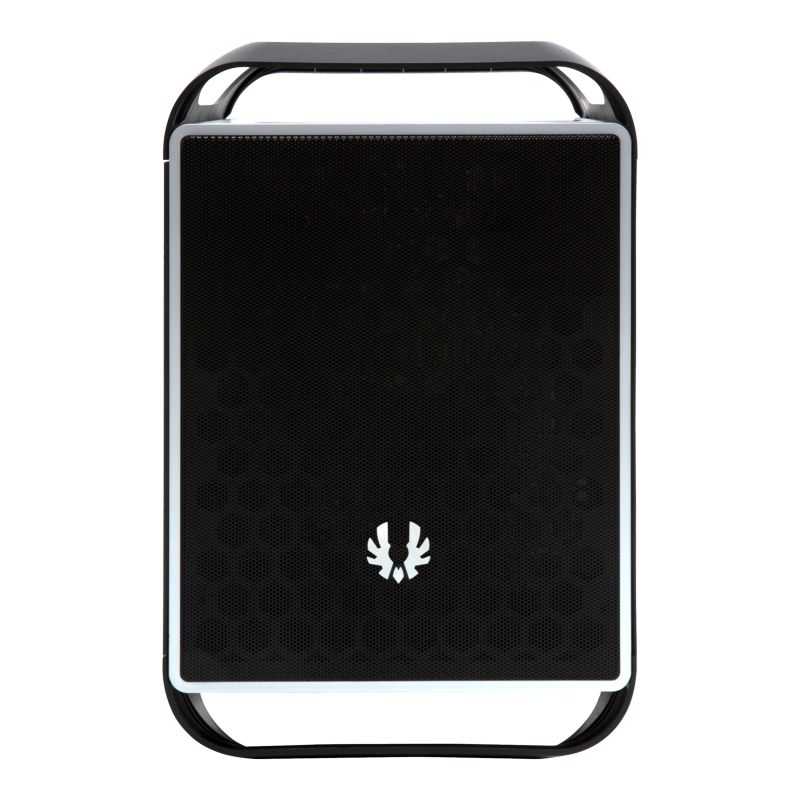
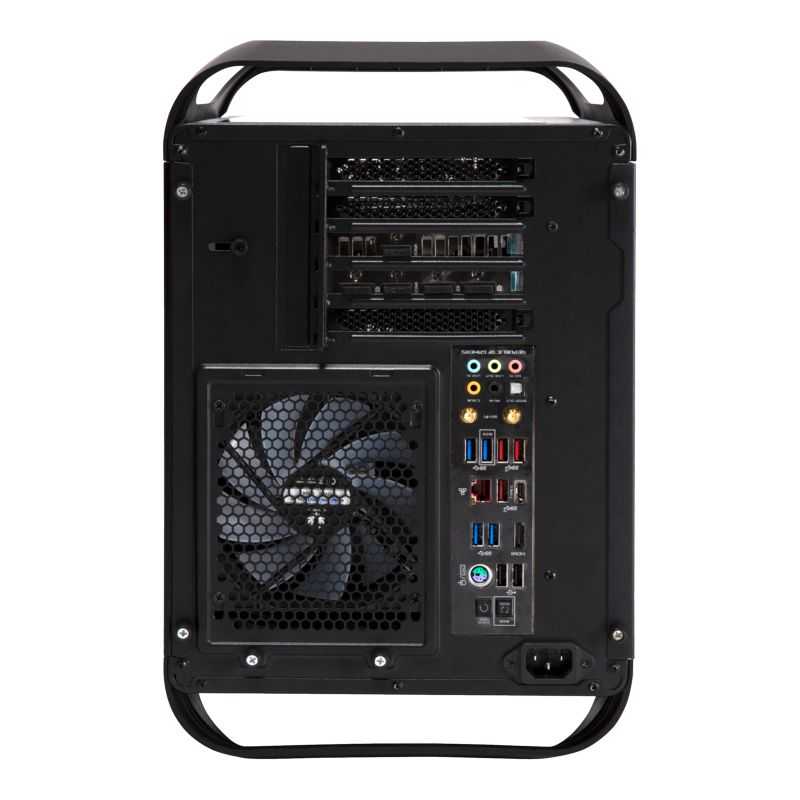
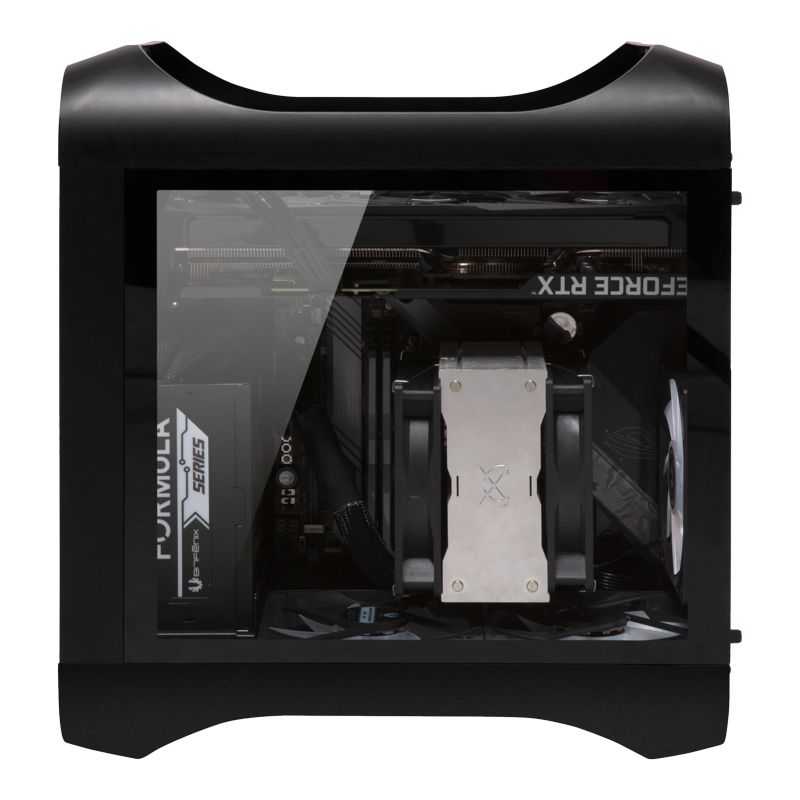
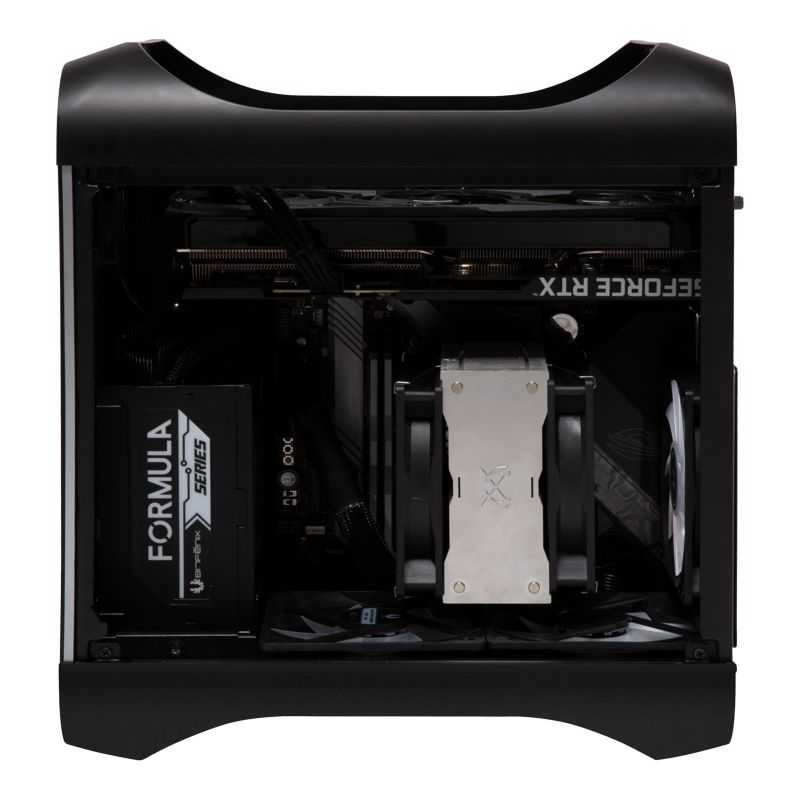
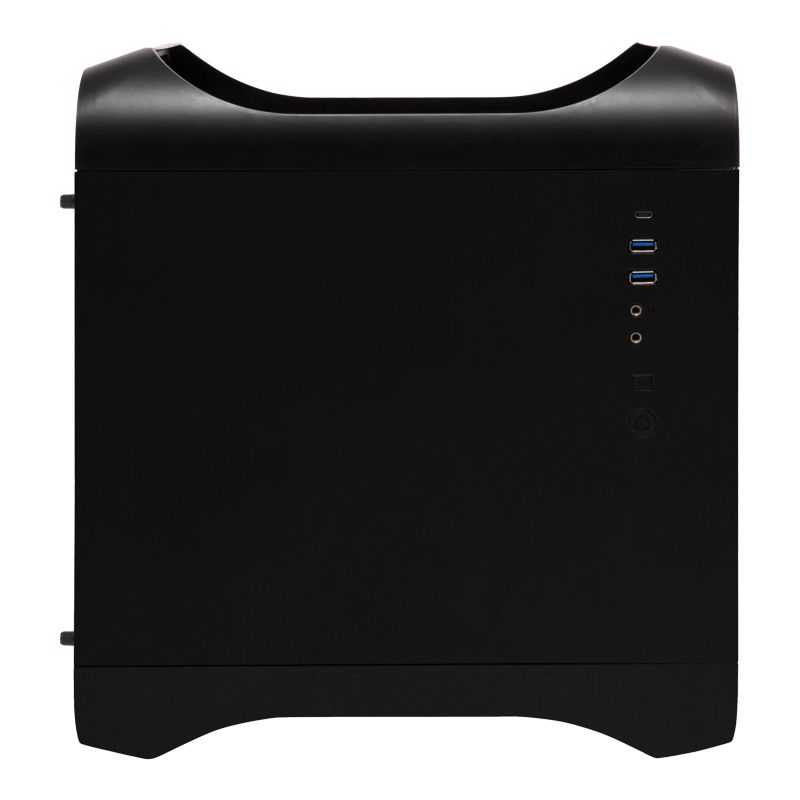
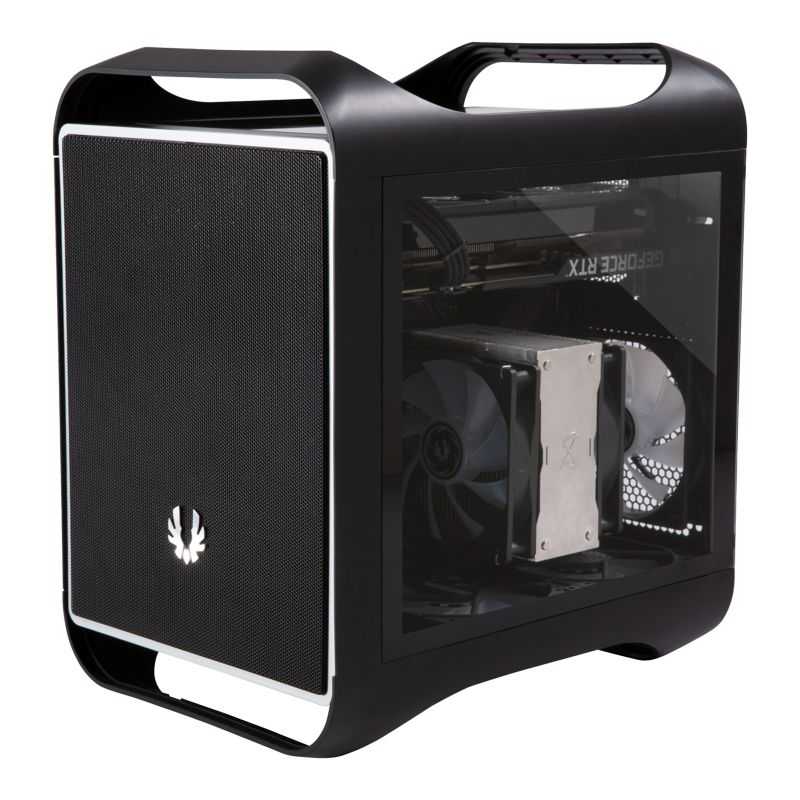
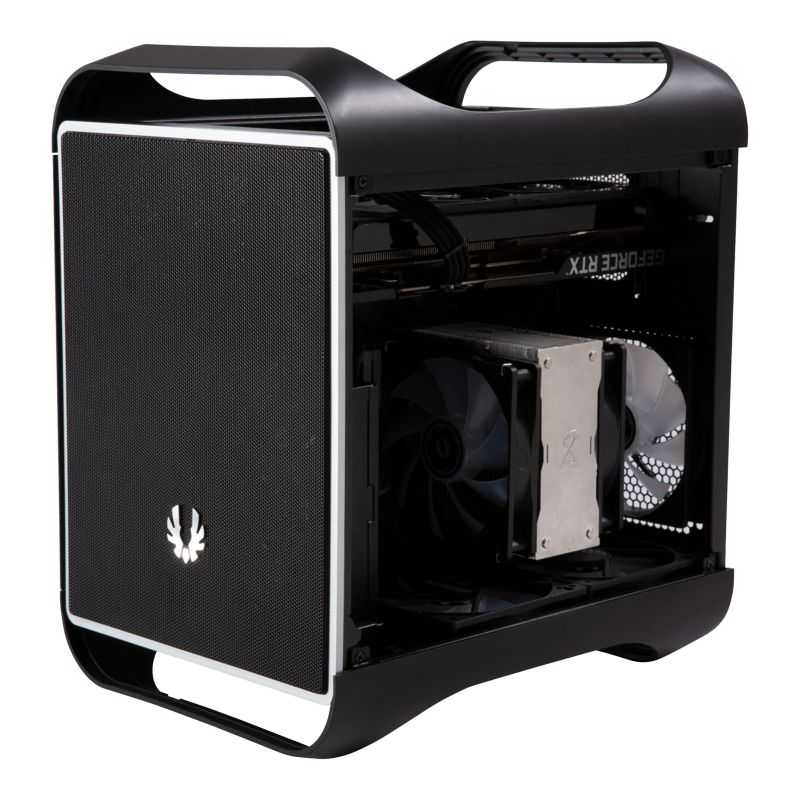
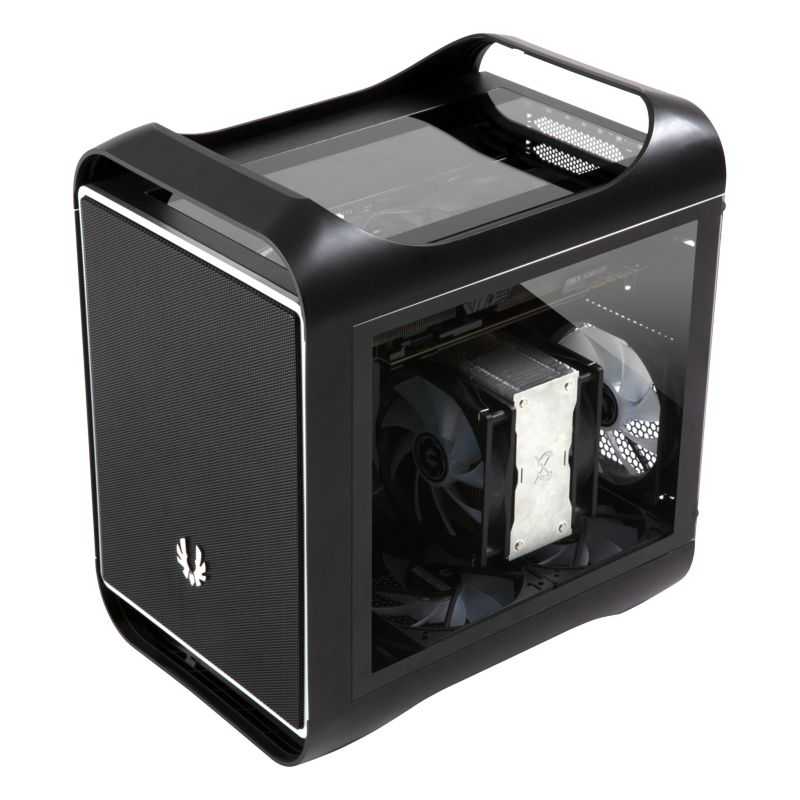
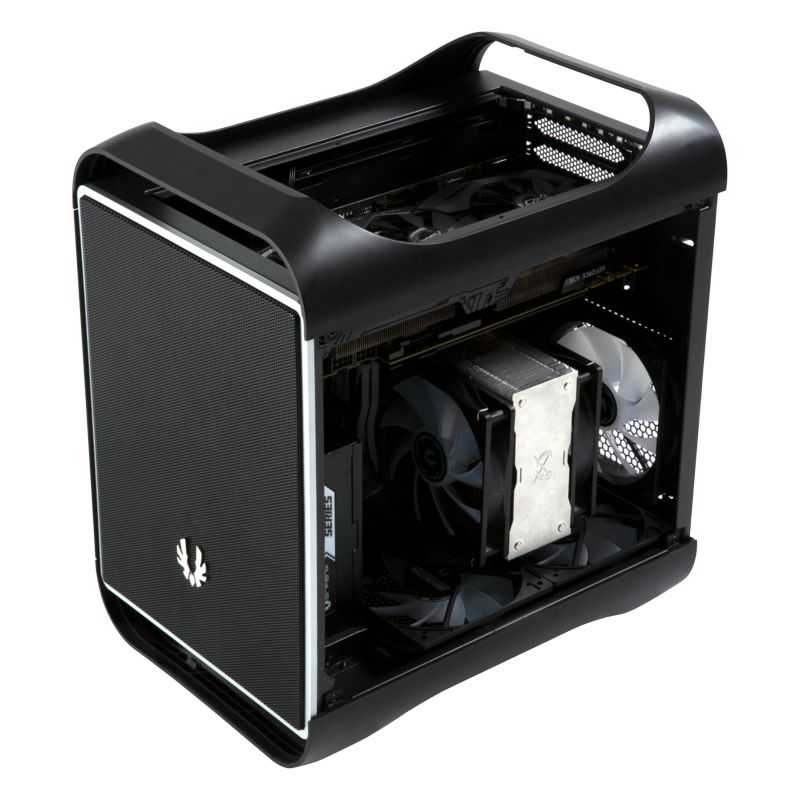
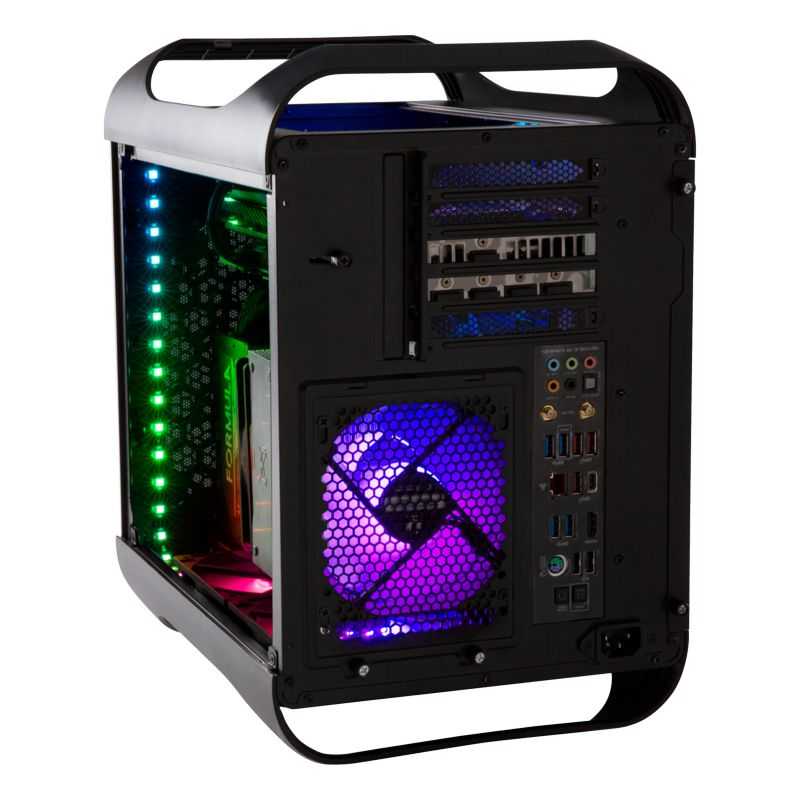
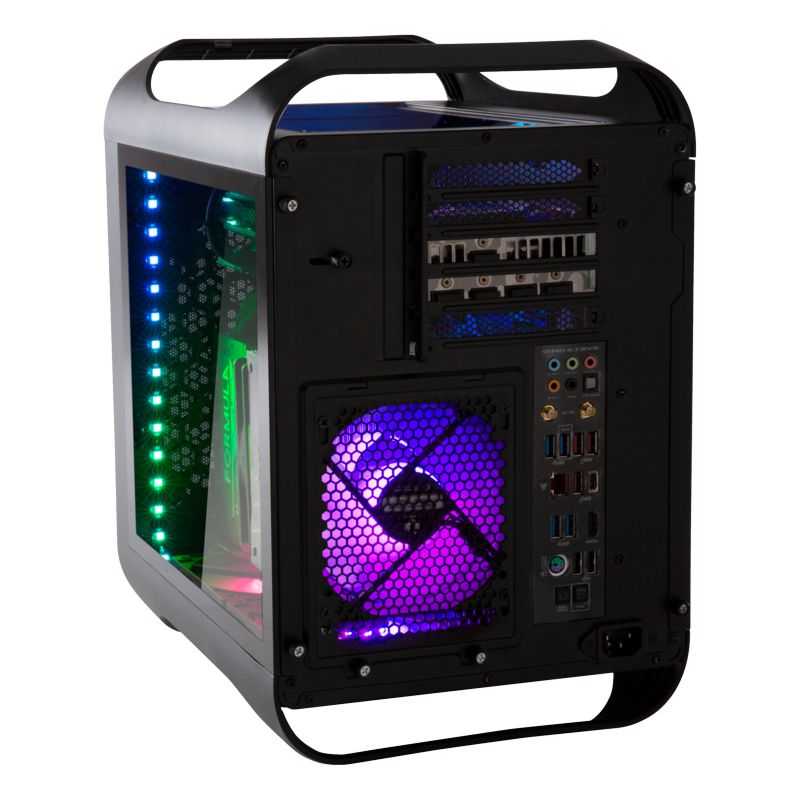
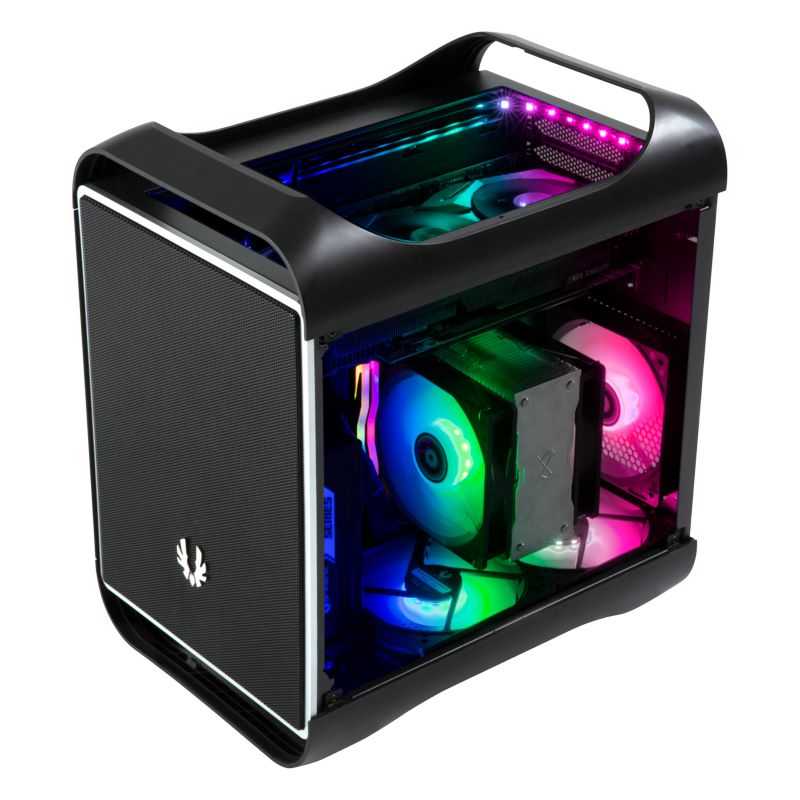
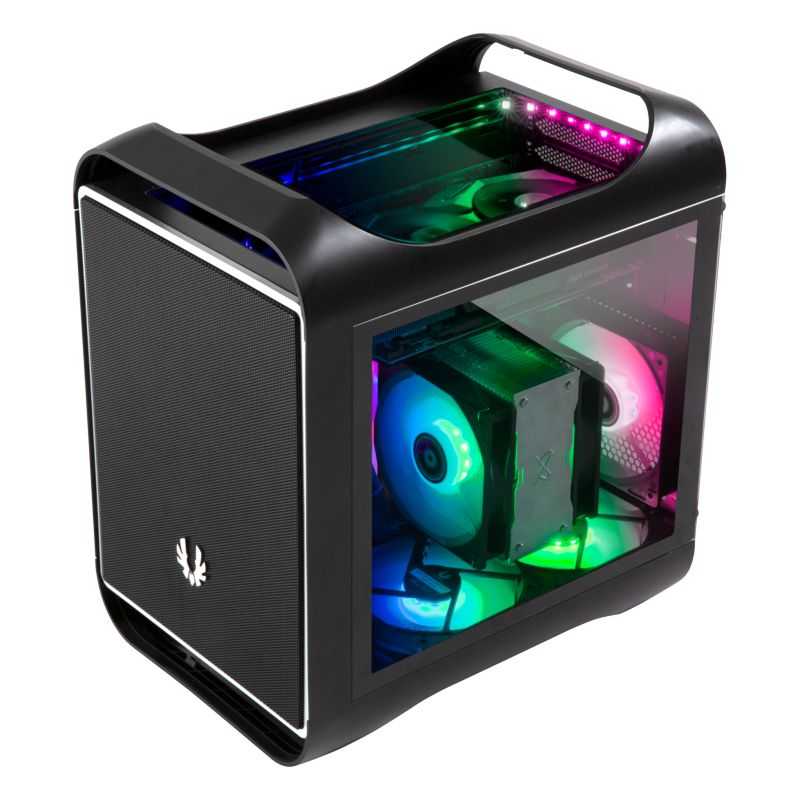
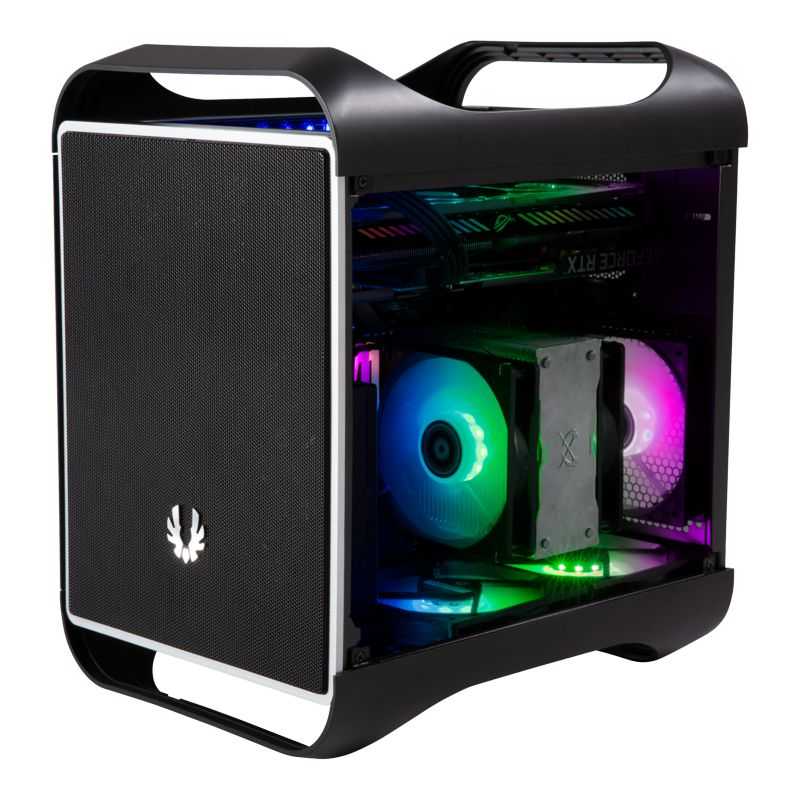
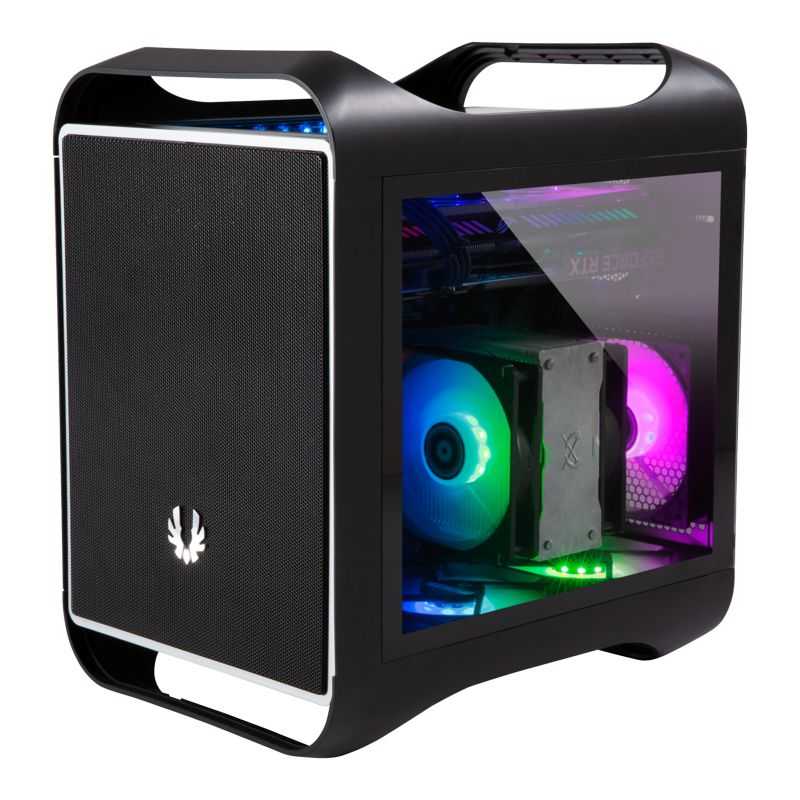
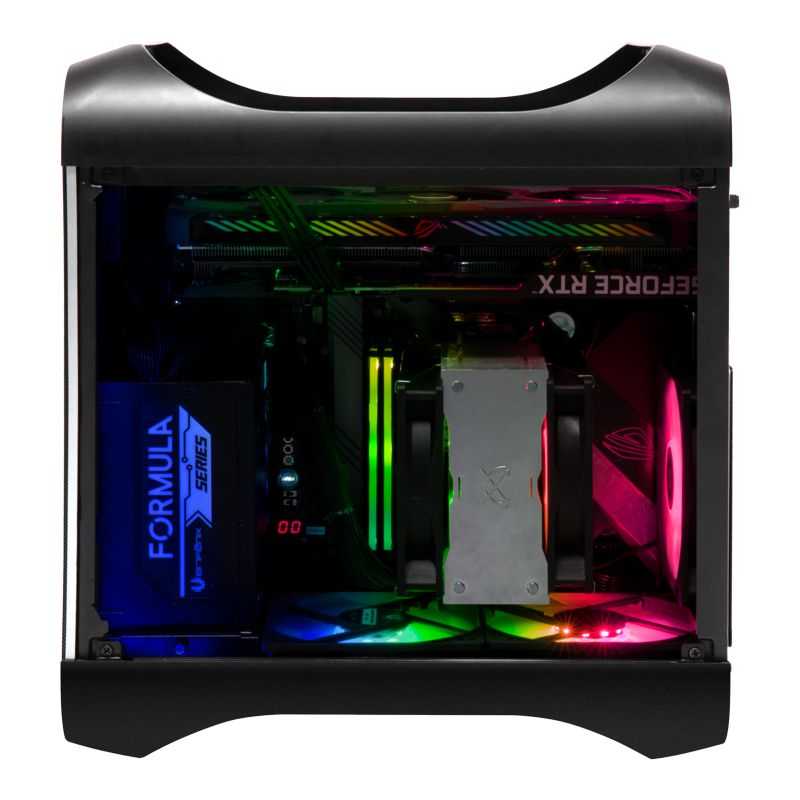
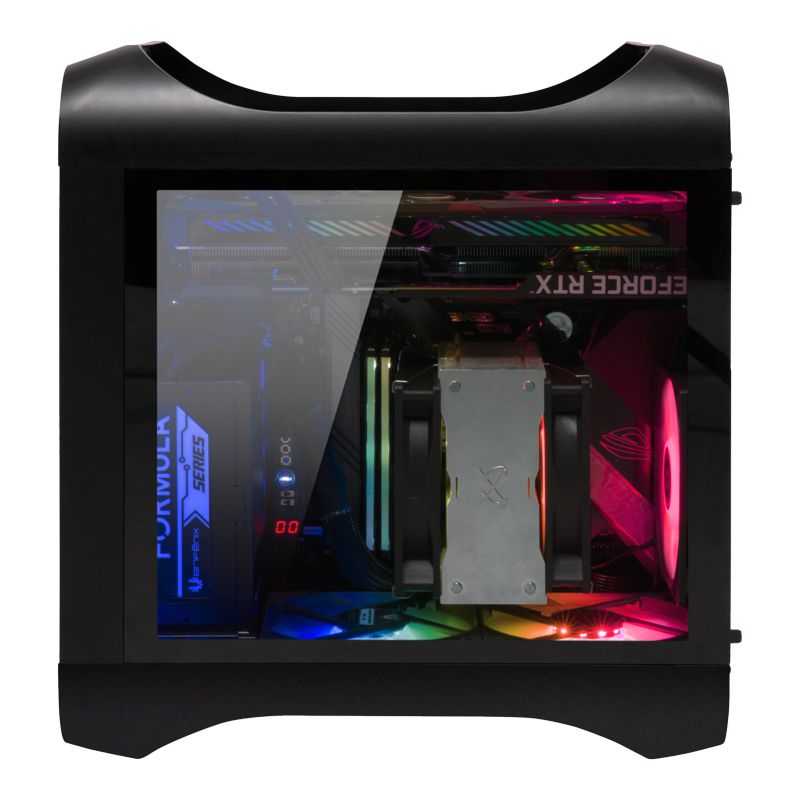
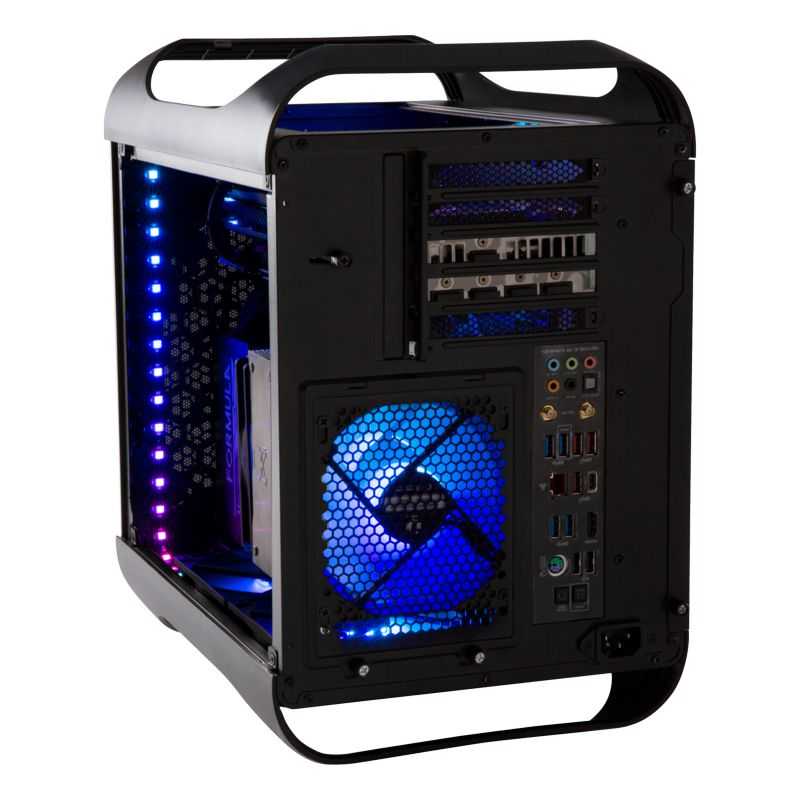
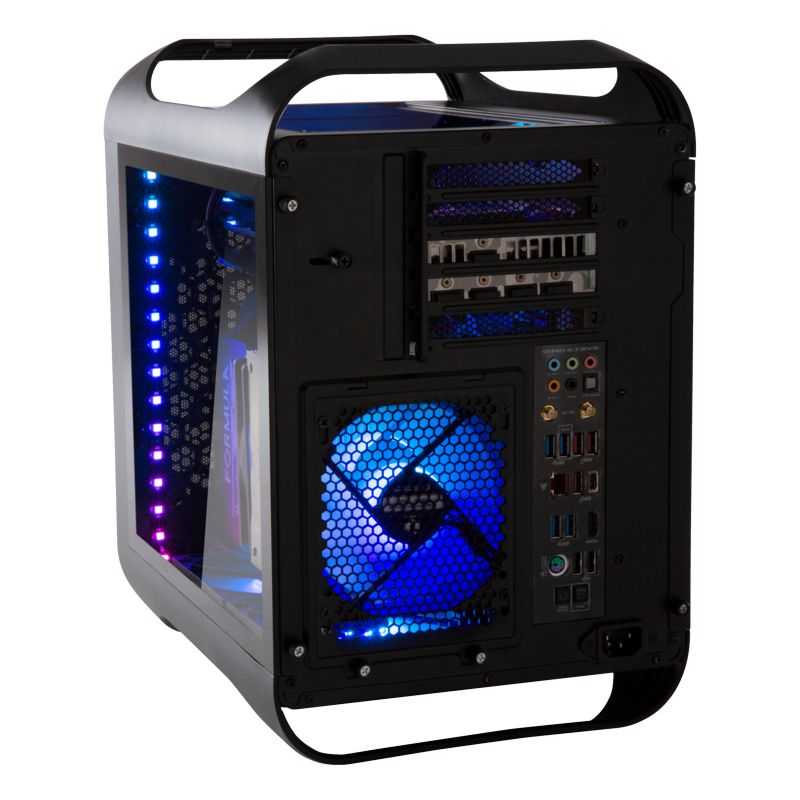
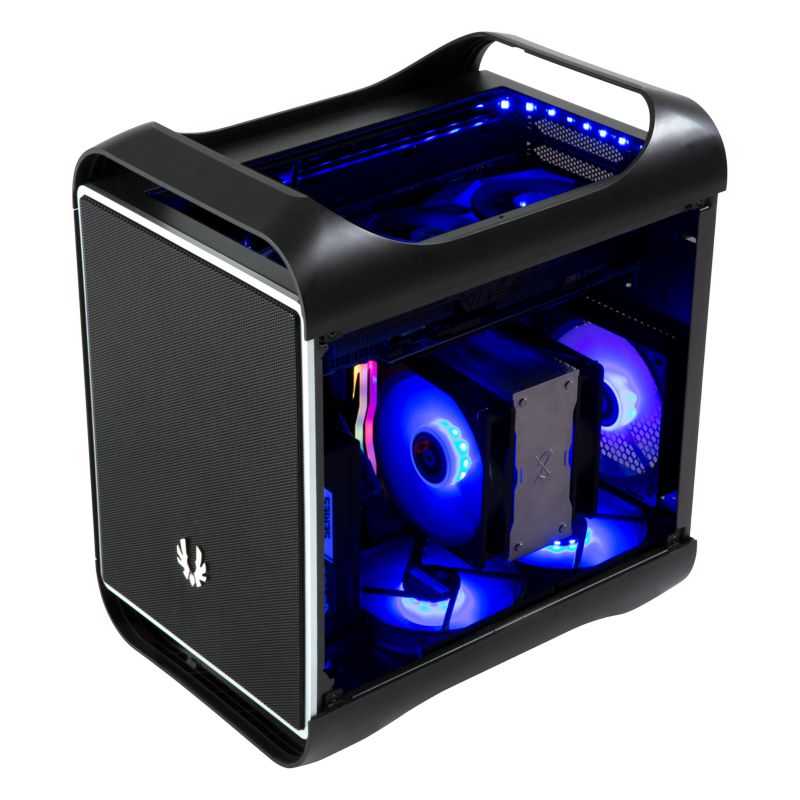
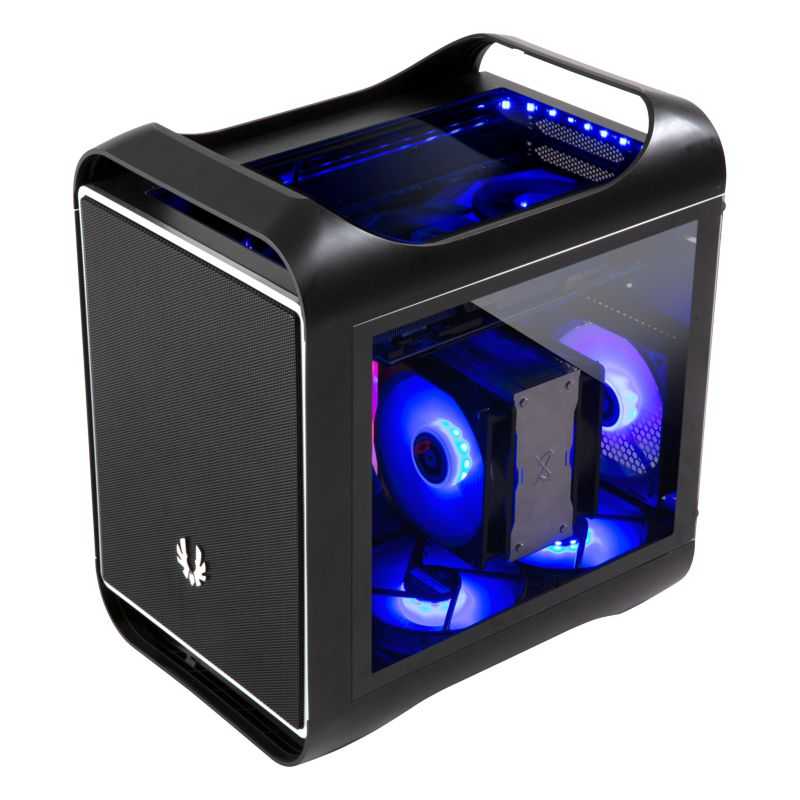
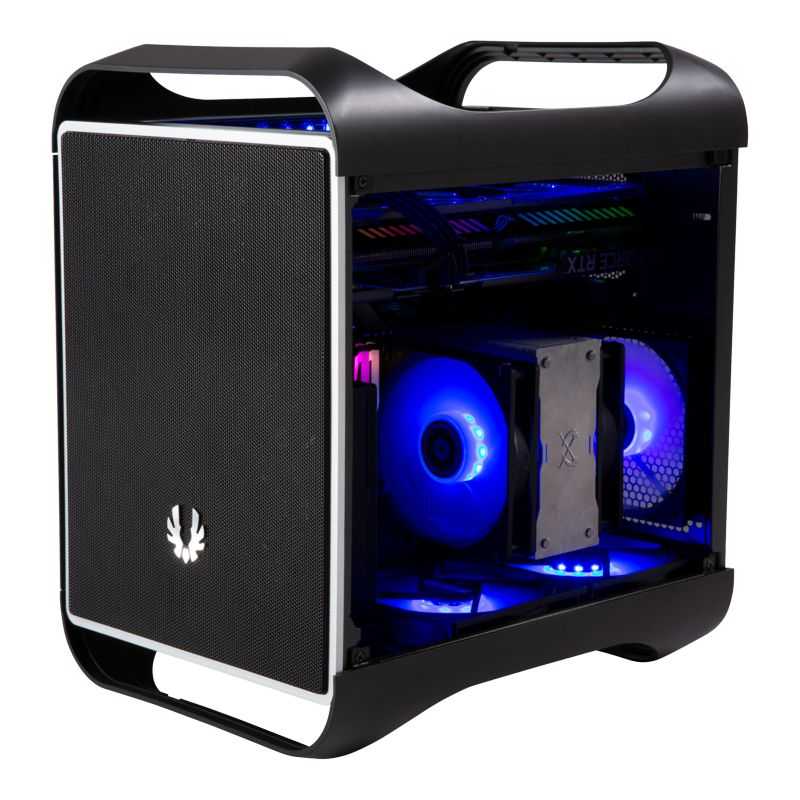
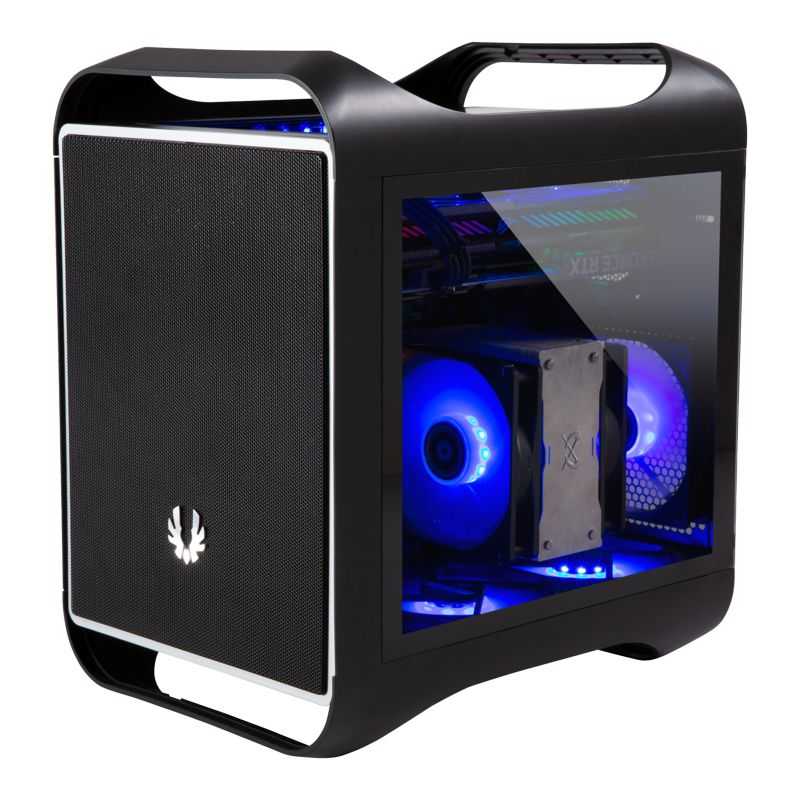
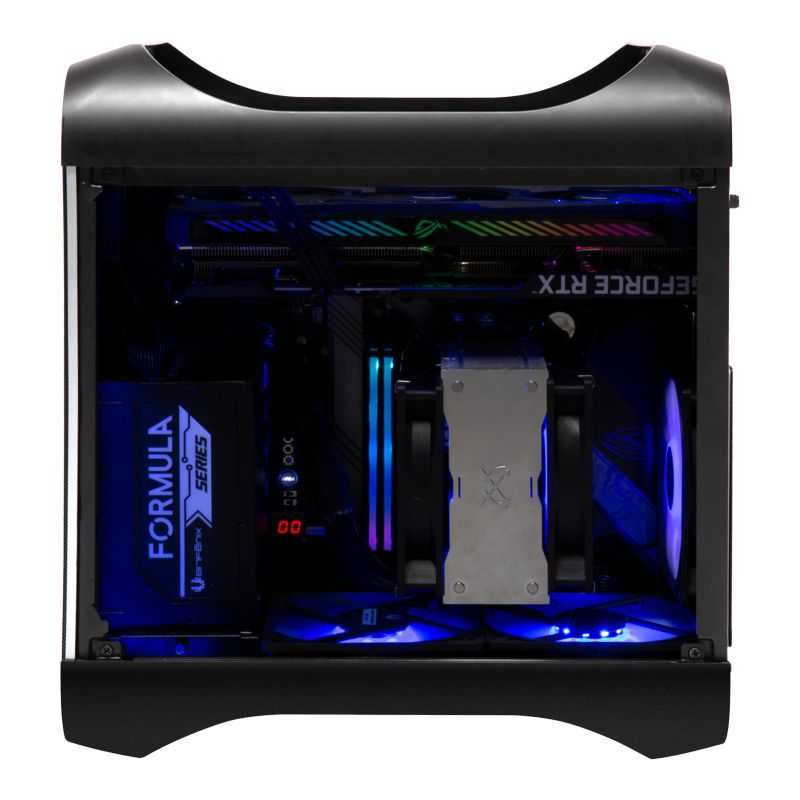
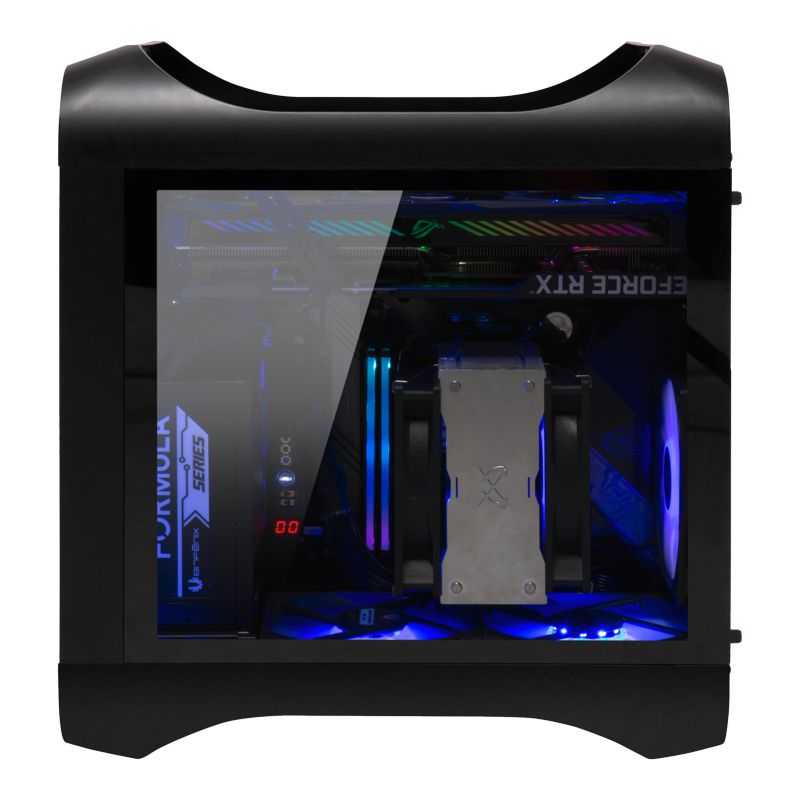
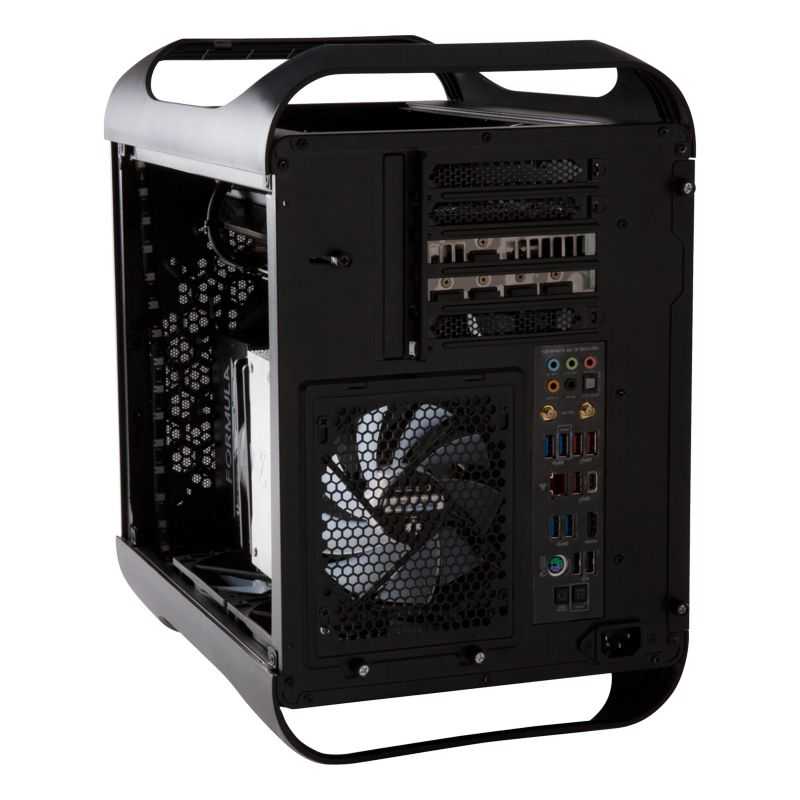
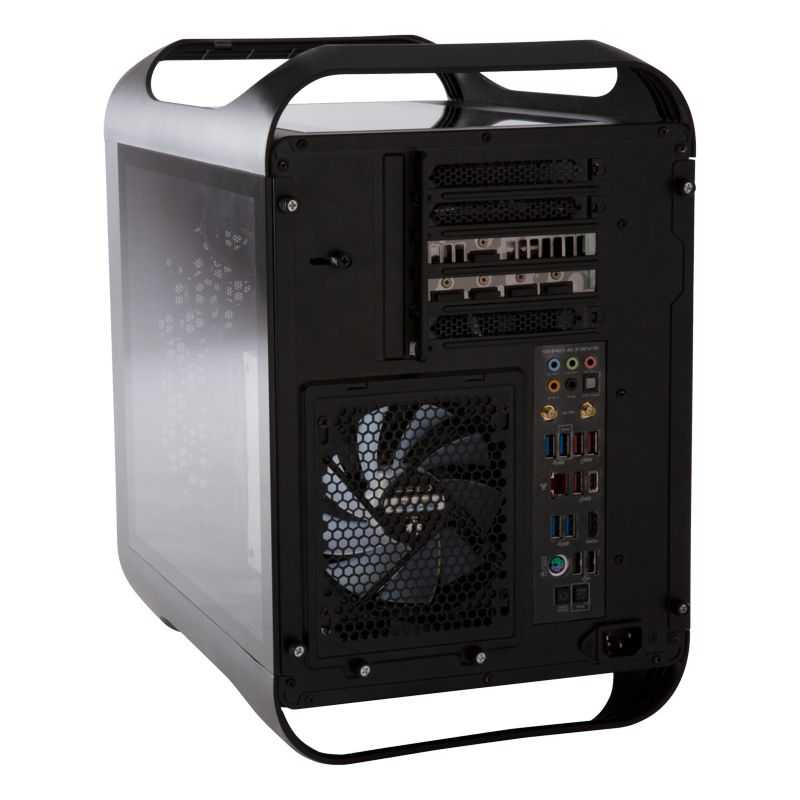
Благодаря своему небольшому форм-фактору Prodigy M допускает множество настроек в концепциях сборки любого пользователя. Поскольку графический процессор может быть установлен как вертикально, так и горизонтально, пользователь может установить до двух 120-миллиметровых вентиляторов в нижней части корпуса или даже водяные охладители длиной до 280 мм (с прилагаемыми кронштейнами) для большего количества вариантов охлаждения.
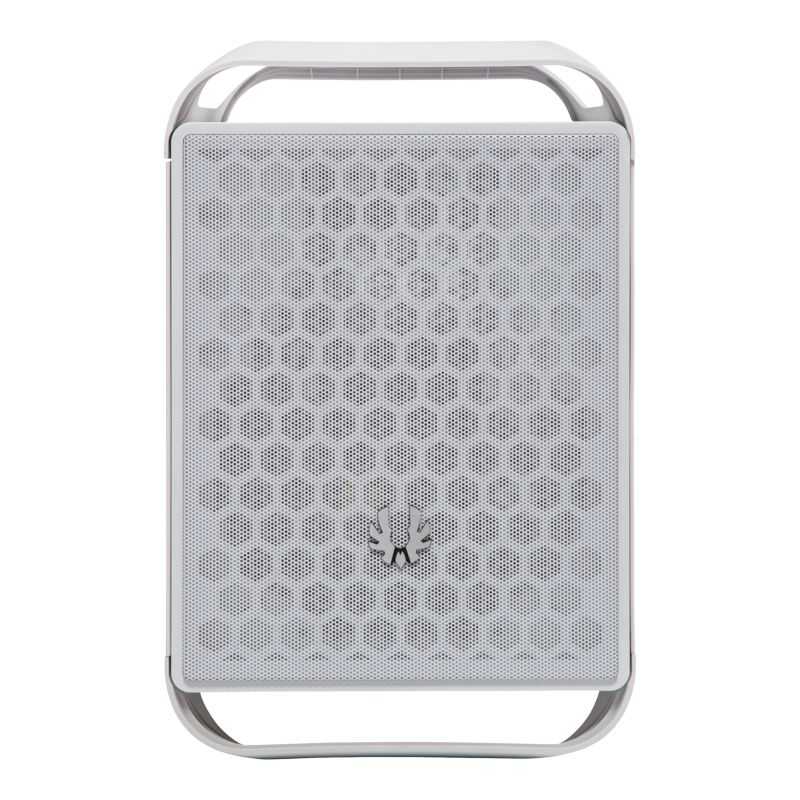
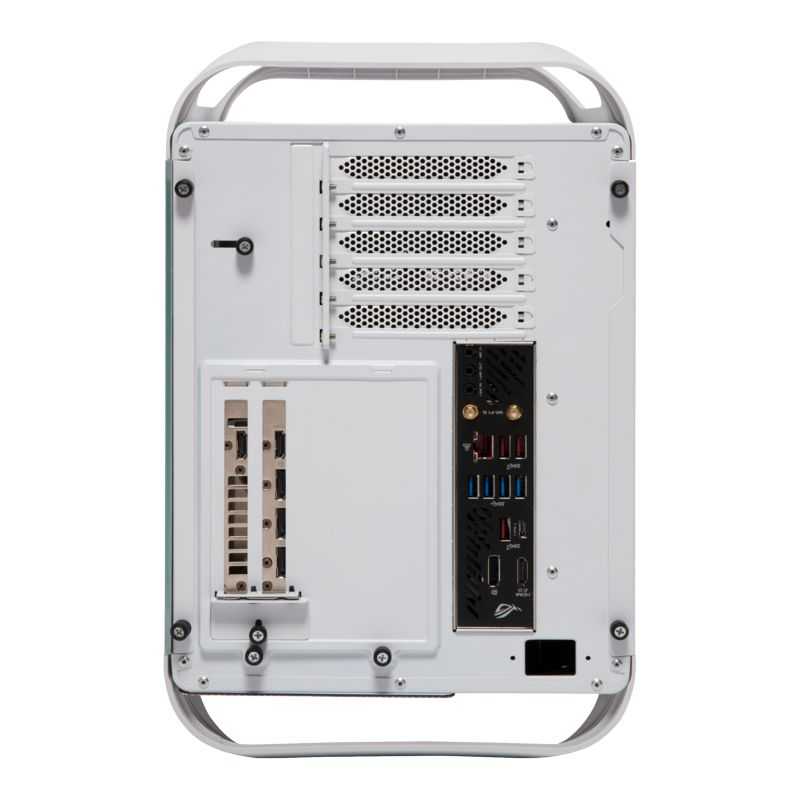
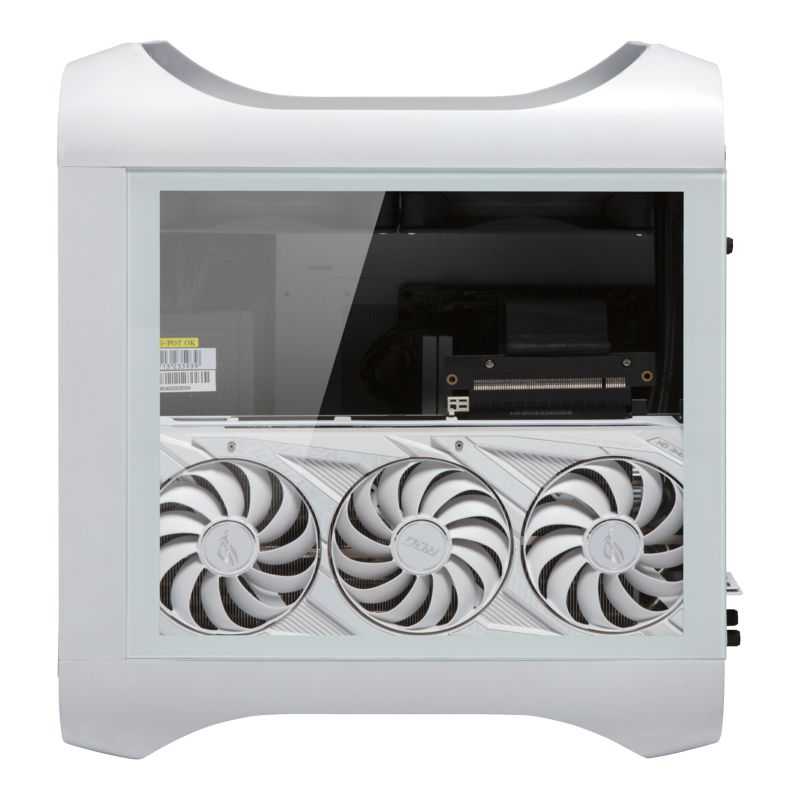
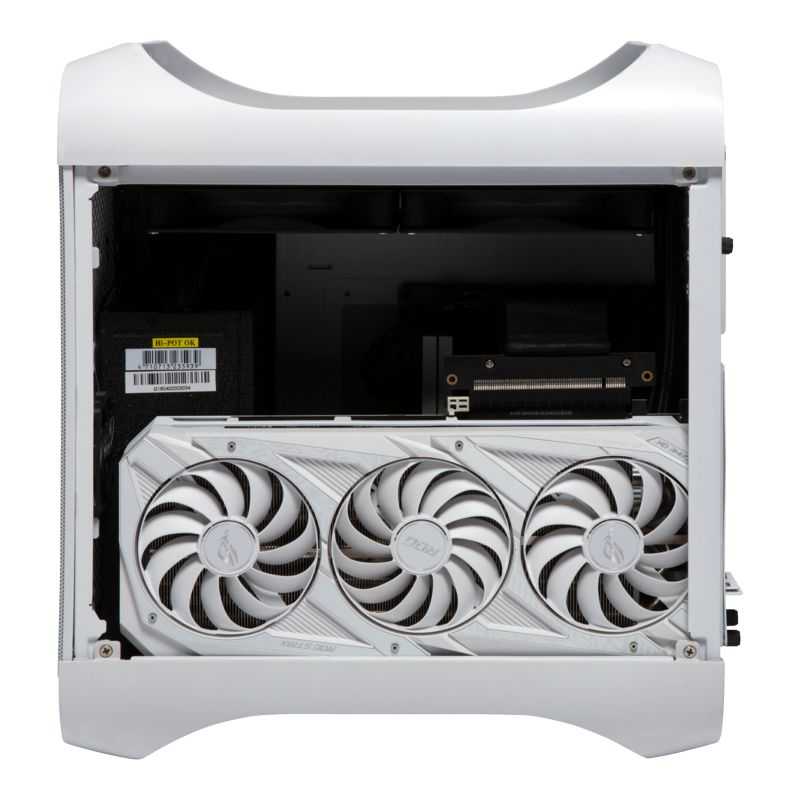
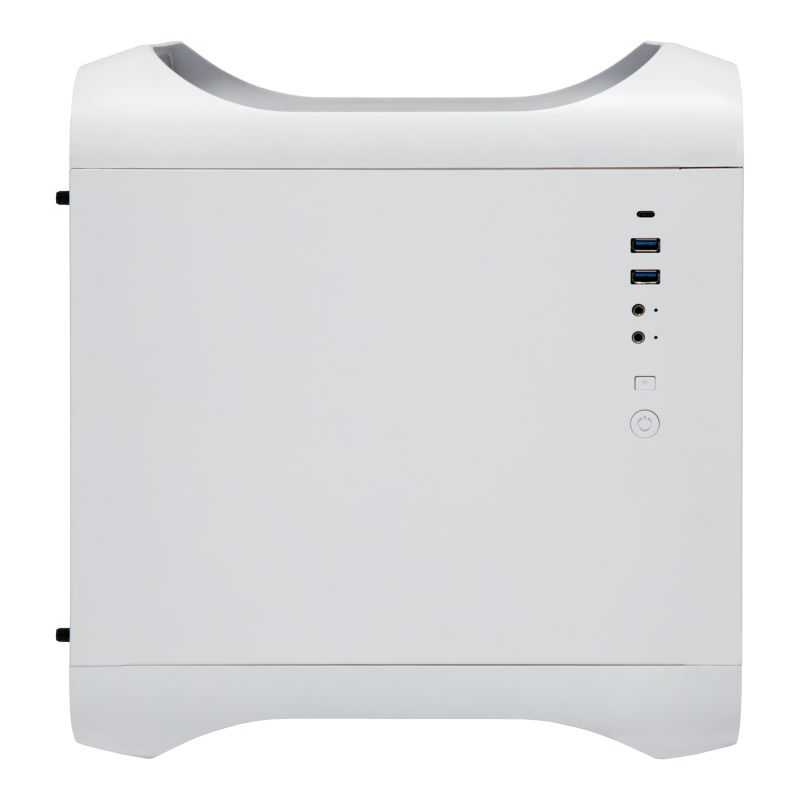
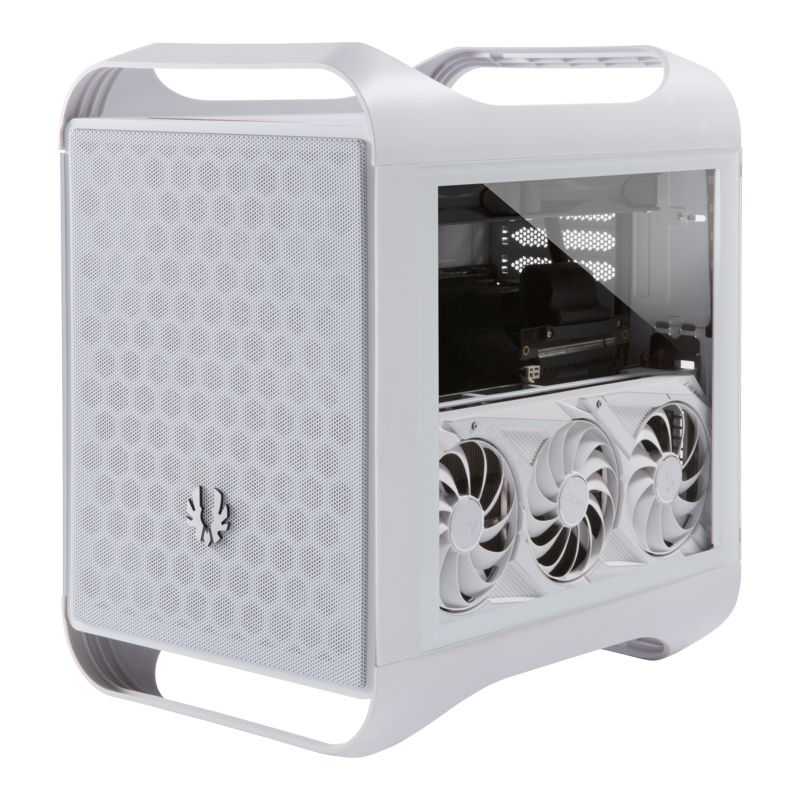
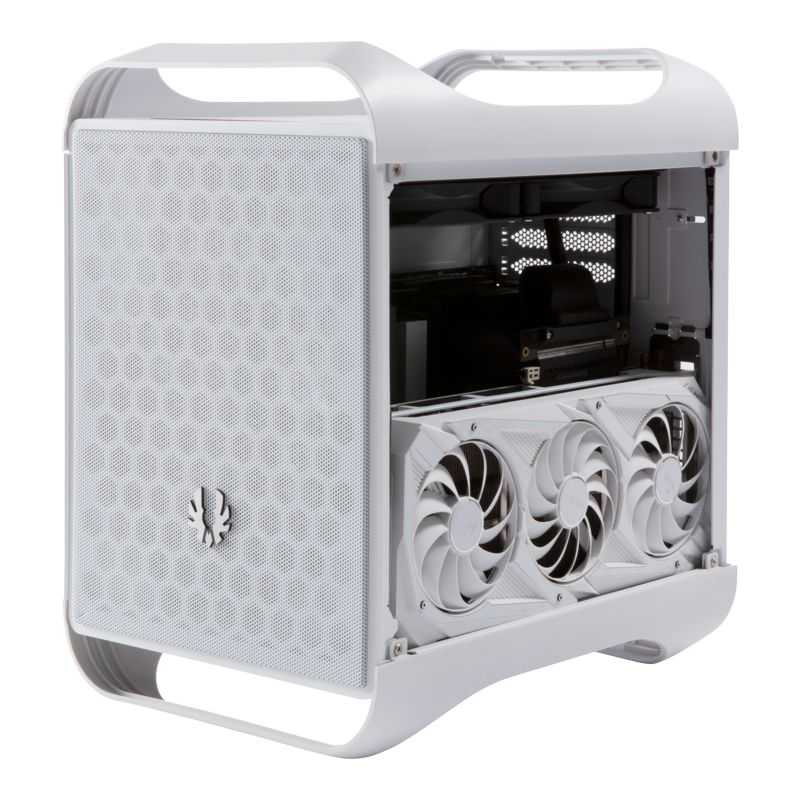
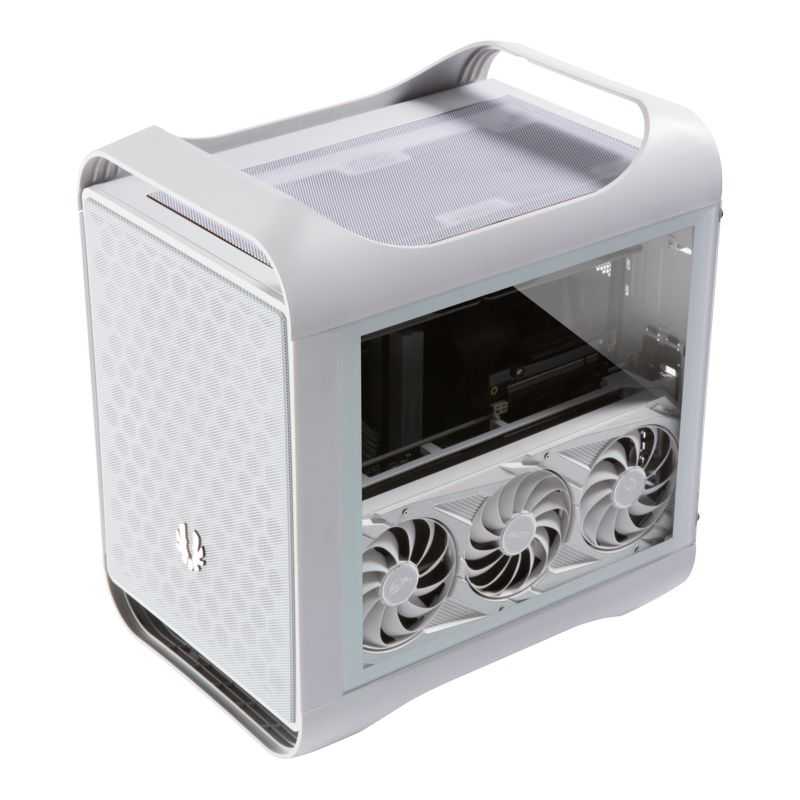
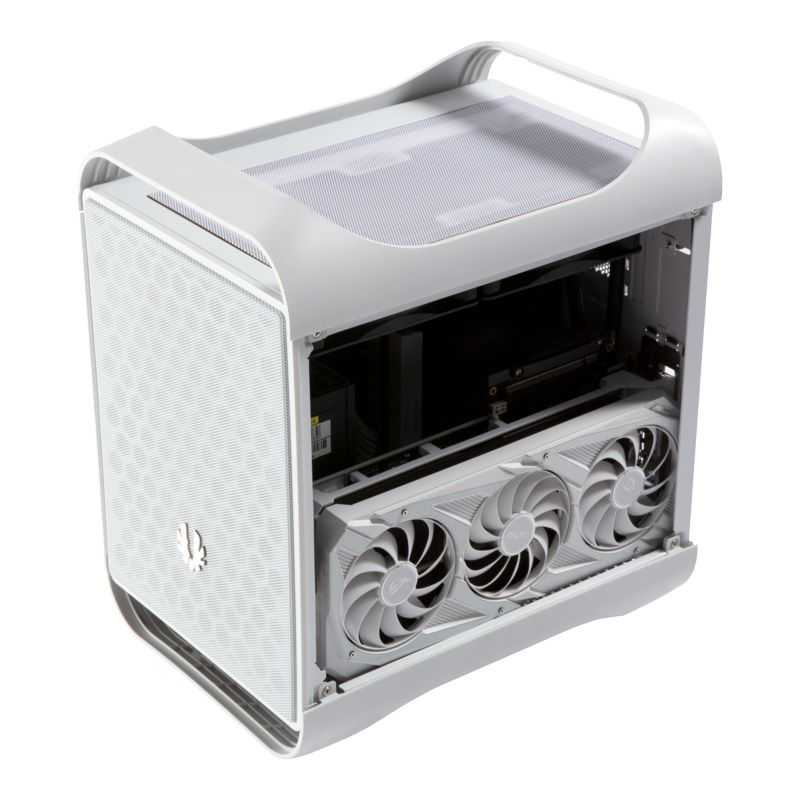
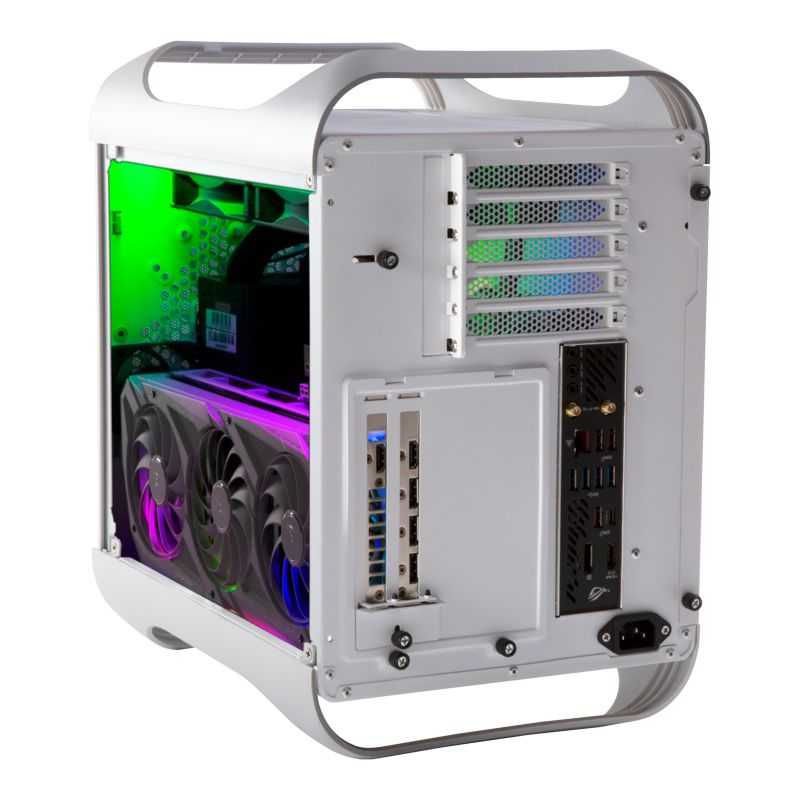
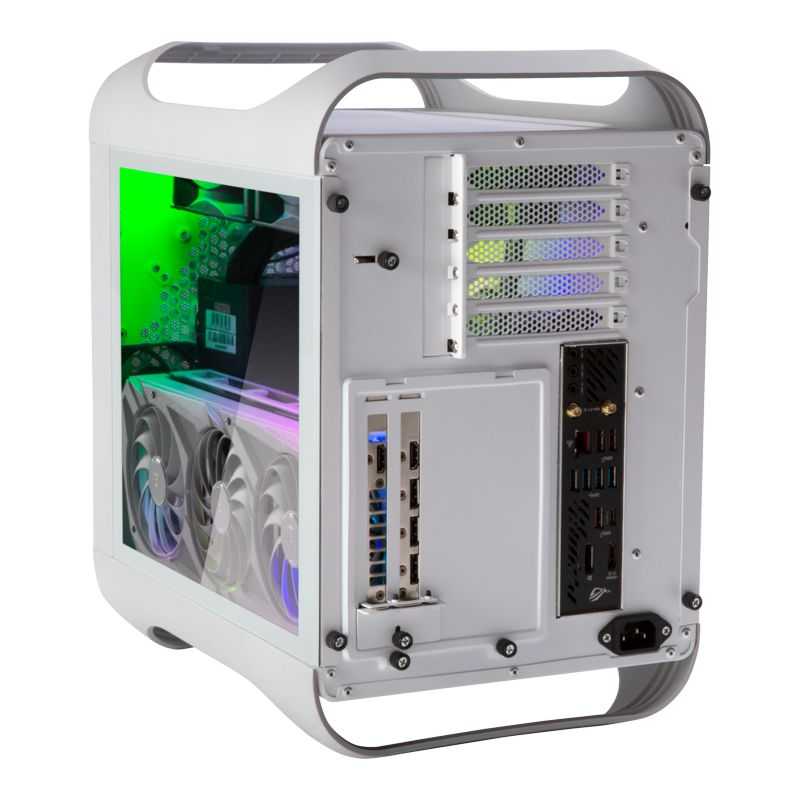
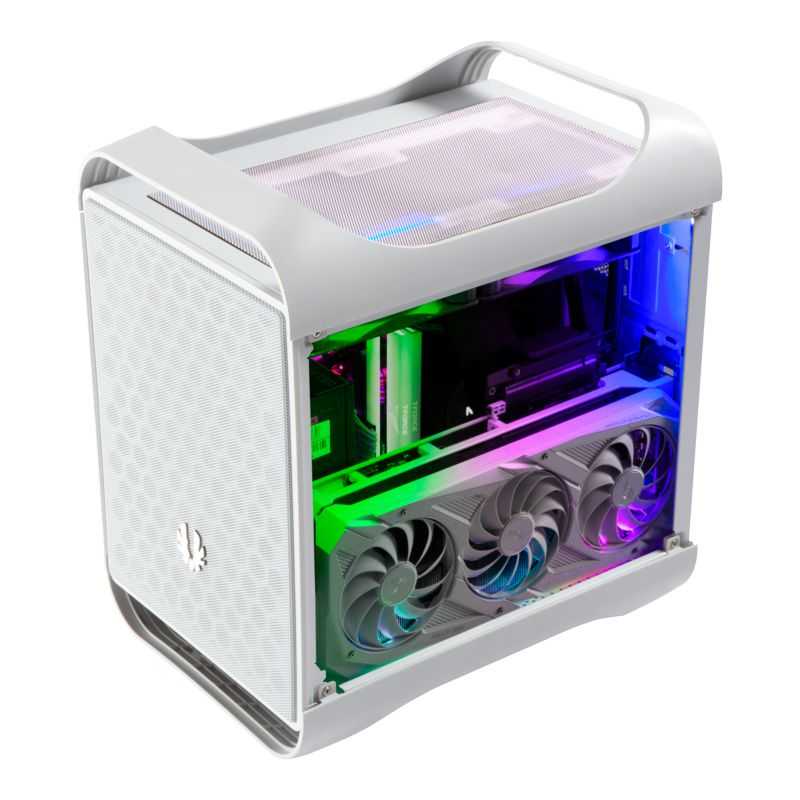
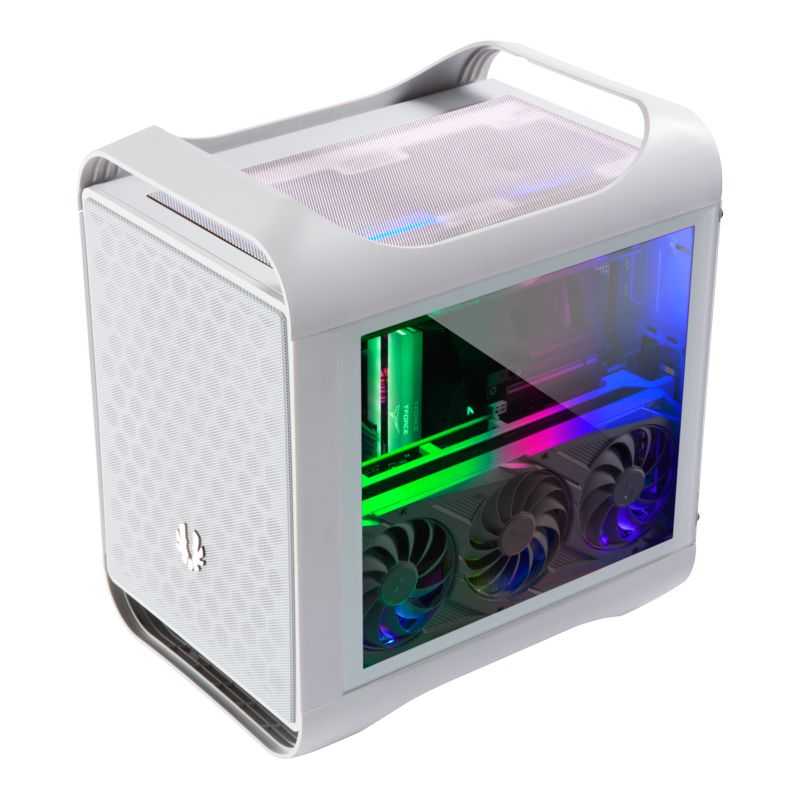
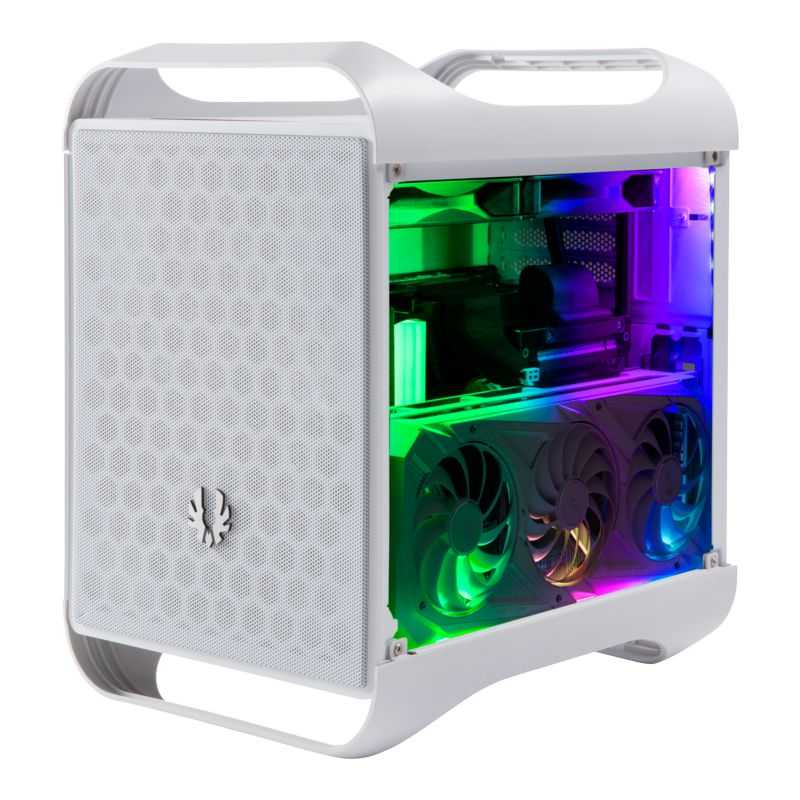
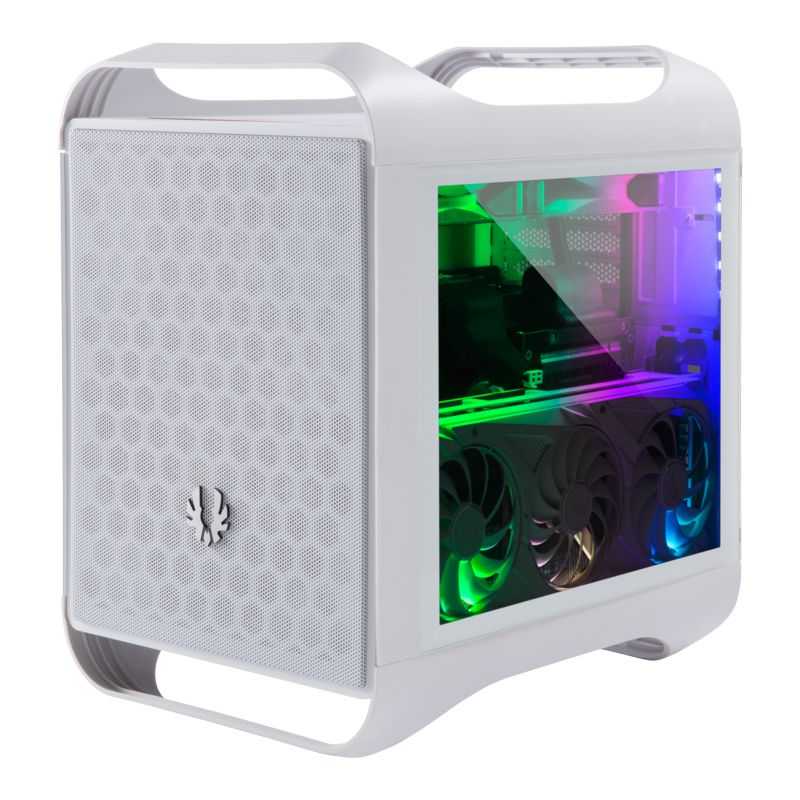
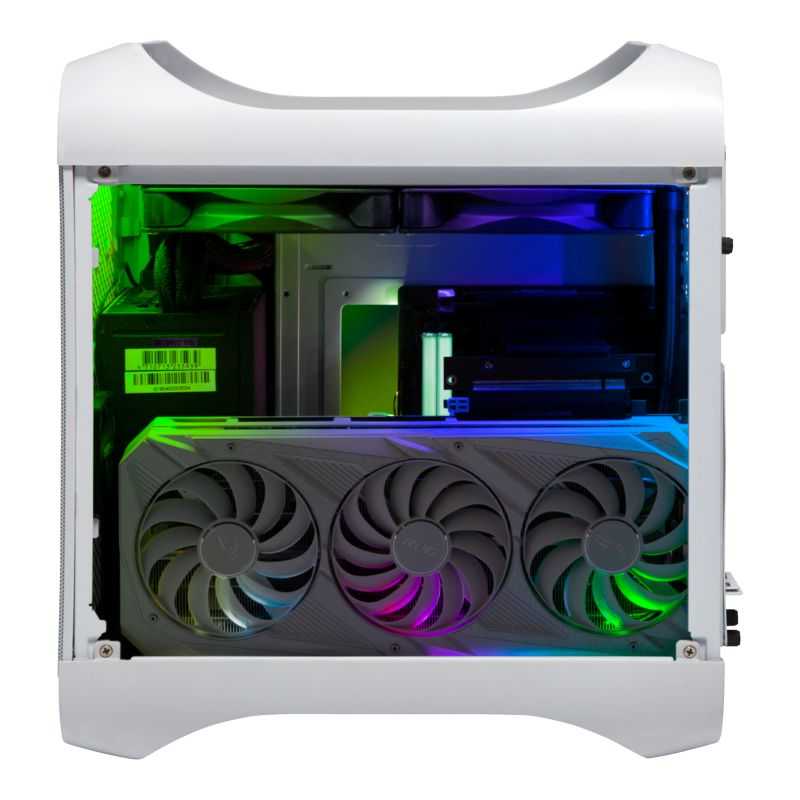
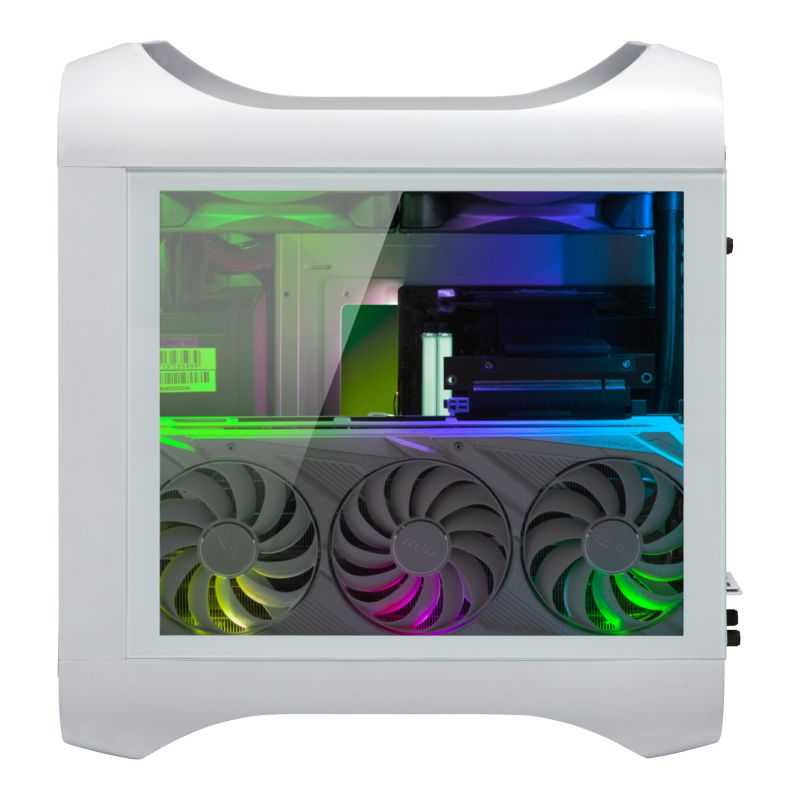
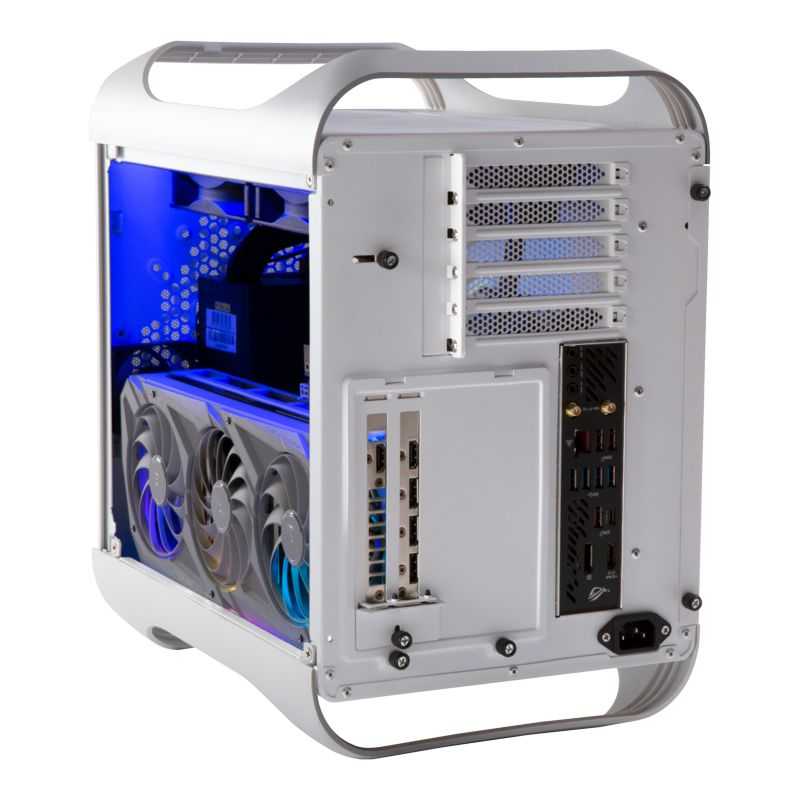
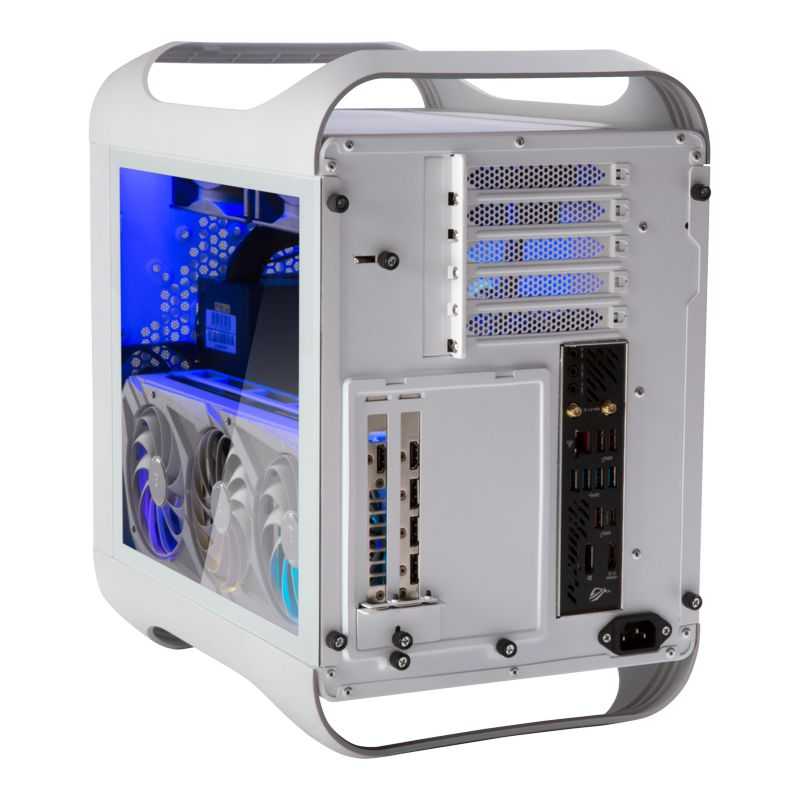

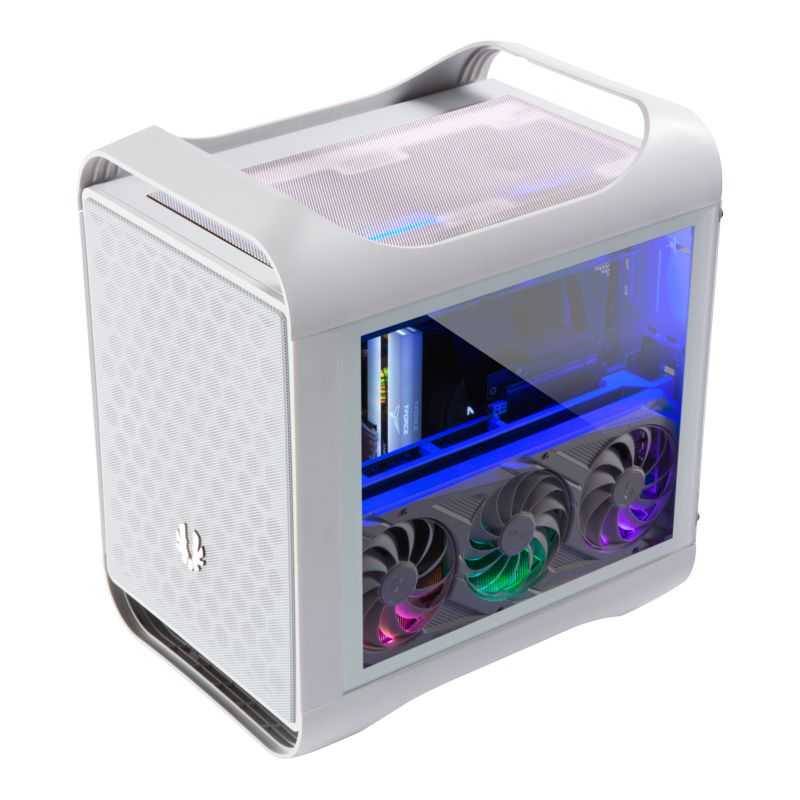
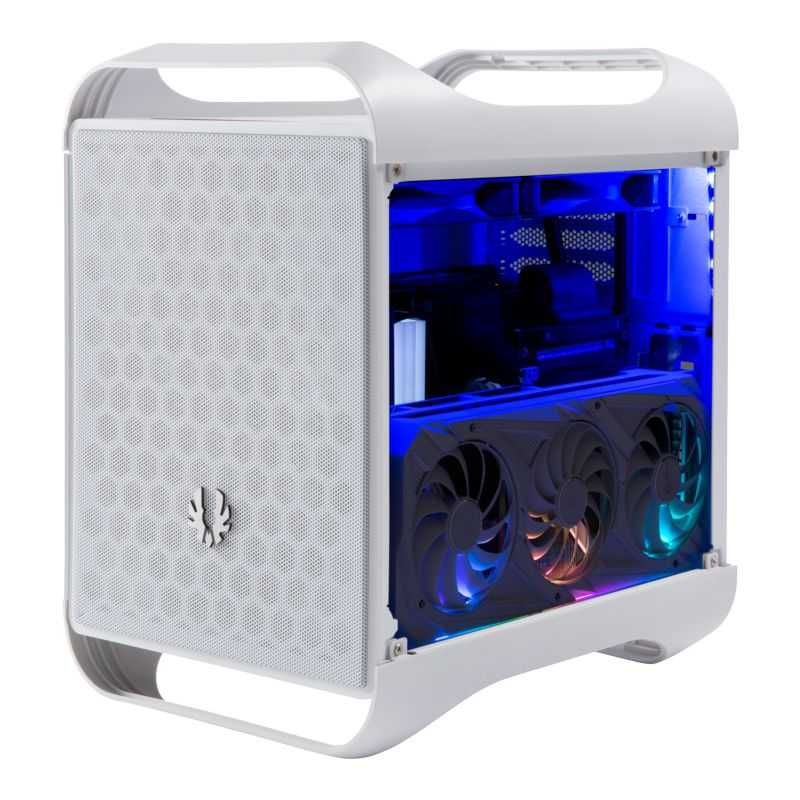
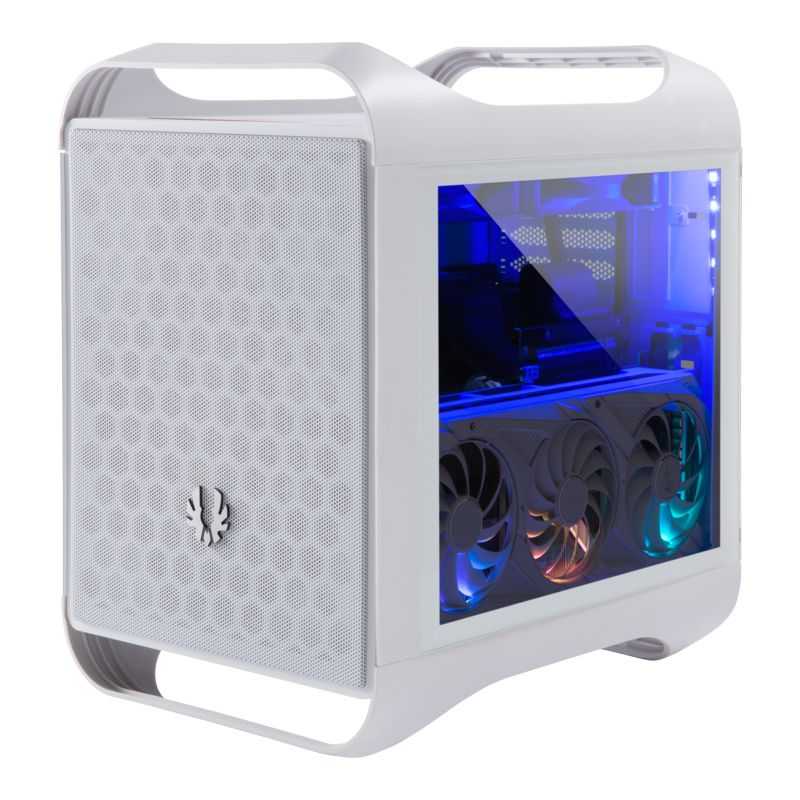
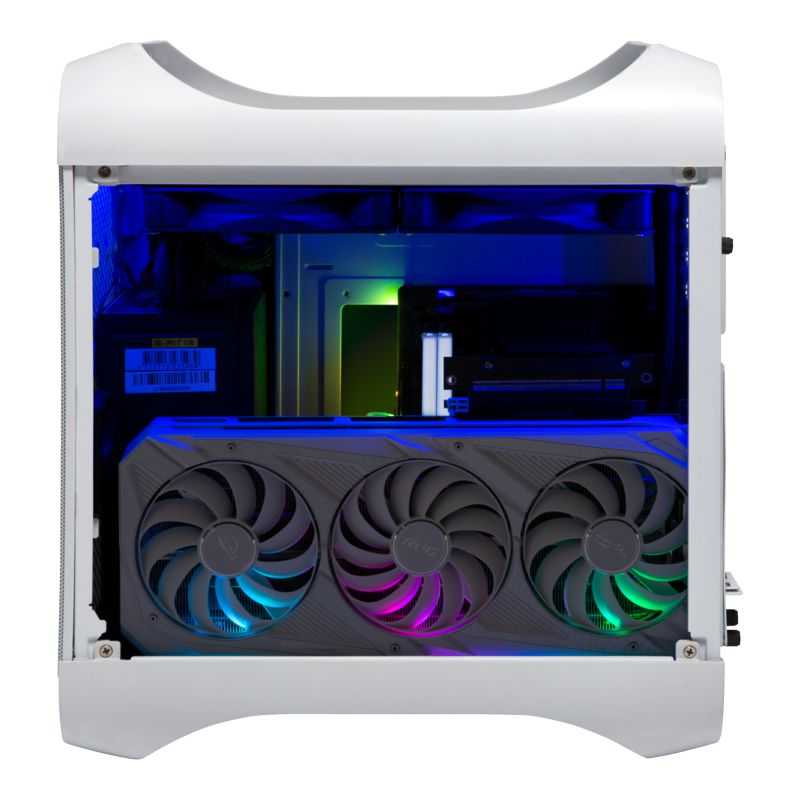
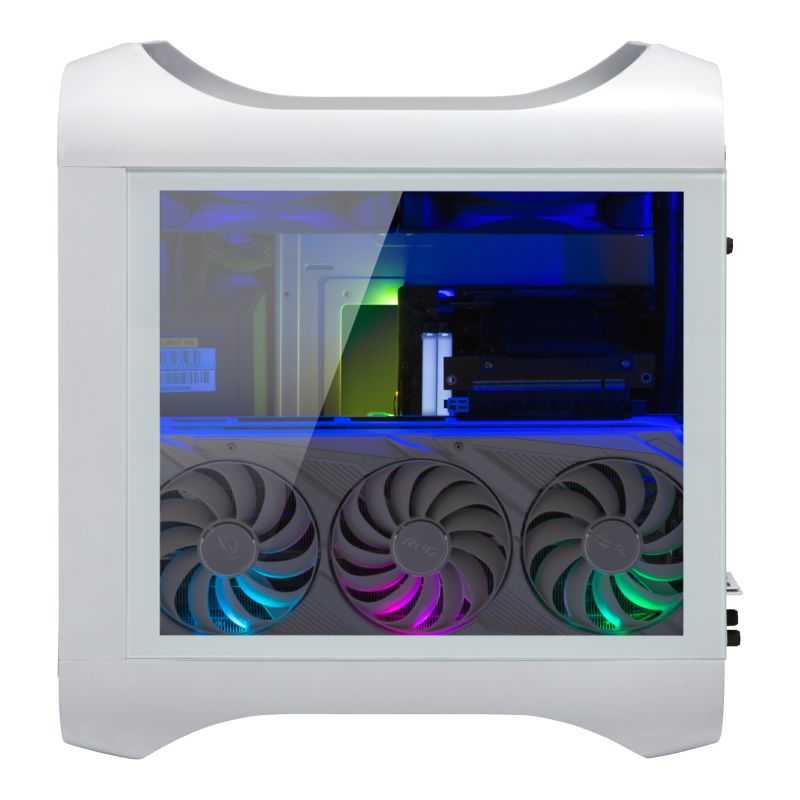
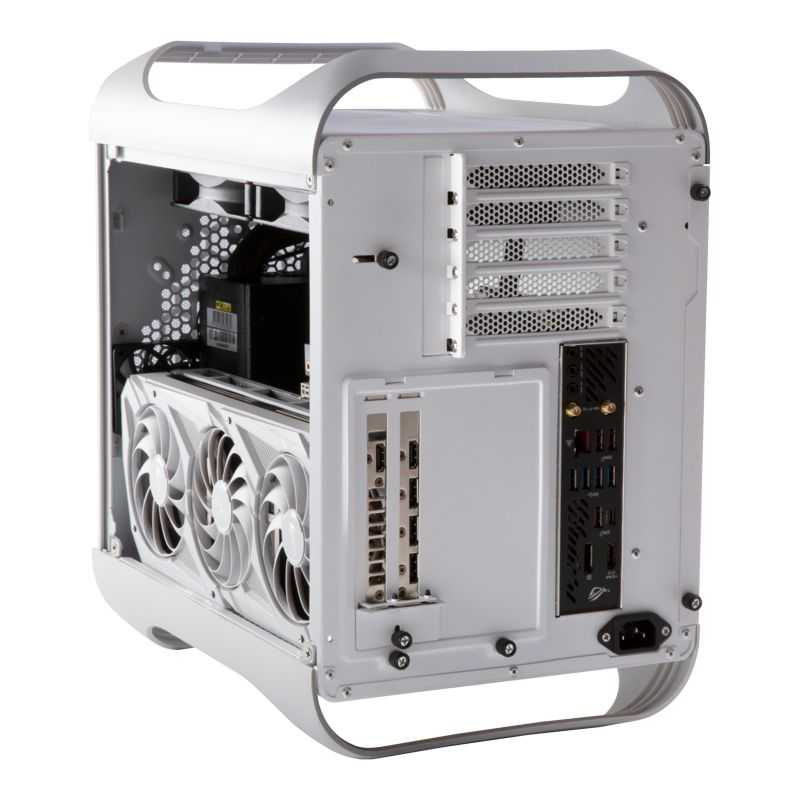
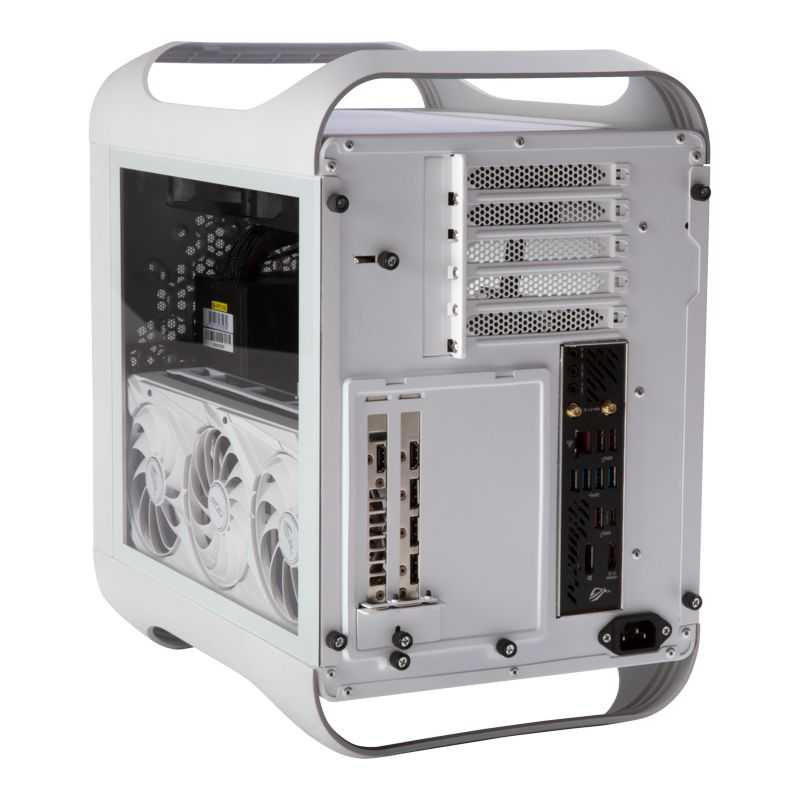
Новая серия Prodigy M также предлагает предустановленный вентилятор 6010 (60 x 60 x 10 мм), чтобы сосредоточиться на охлаждении и максимальном потоке воздуха к графическому процессору.
Компания BitFenix создала серию Prodigy M с стойками для материнских плат, совместимыми с материнскими платами ITX и MicroATX. Prodigy M предлагает удлинительный кабель на 13 А — на три температуры выше, чем у большинства стандартных силовых кабелей на 10 А — что обеспечивает большую «надежность и безопасность при высоких уровнях нагрузки». Поддержка жестких дисков доступна в новом Prodigy M с возможностью «2 + 2 3,5-дюймовых диска и 2 + 3 2,5-дюймовых диска», размещая их либо снизу, либо сбоку с помощью совместимых монтажных кронштейнов.
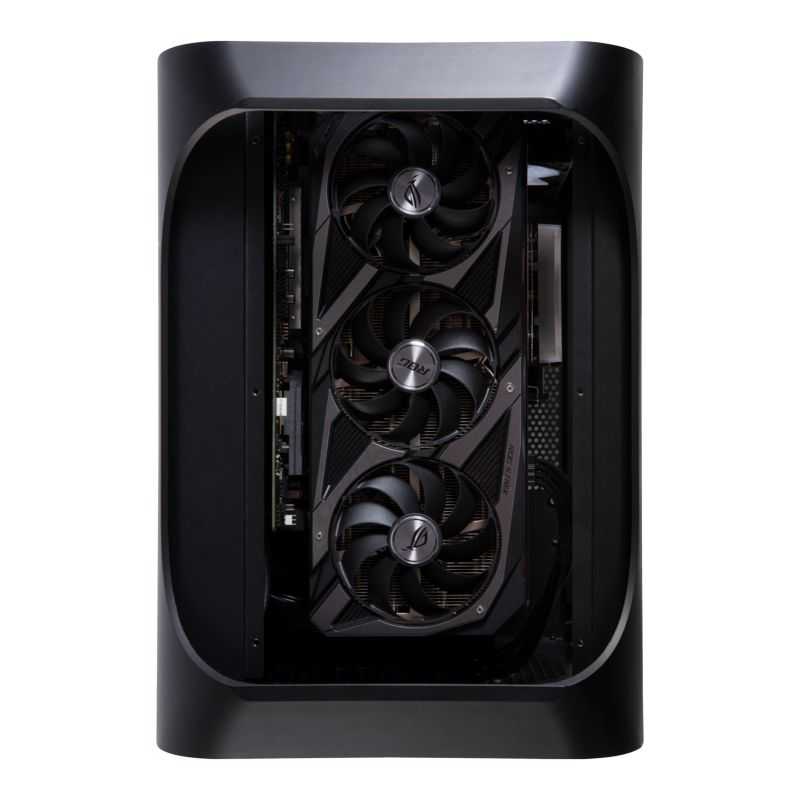
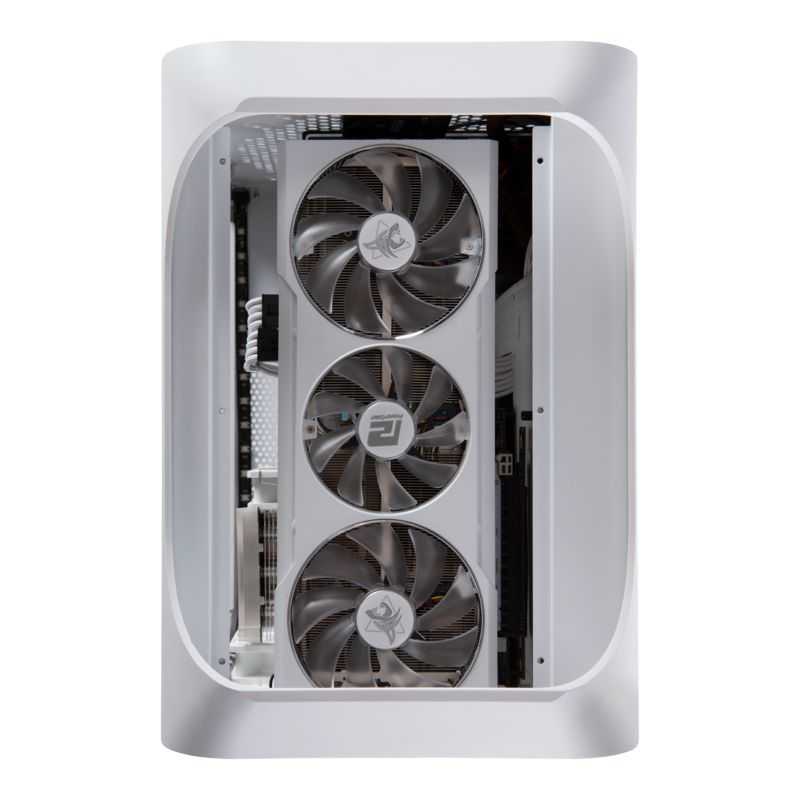
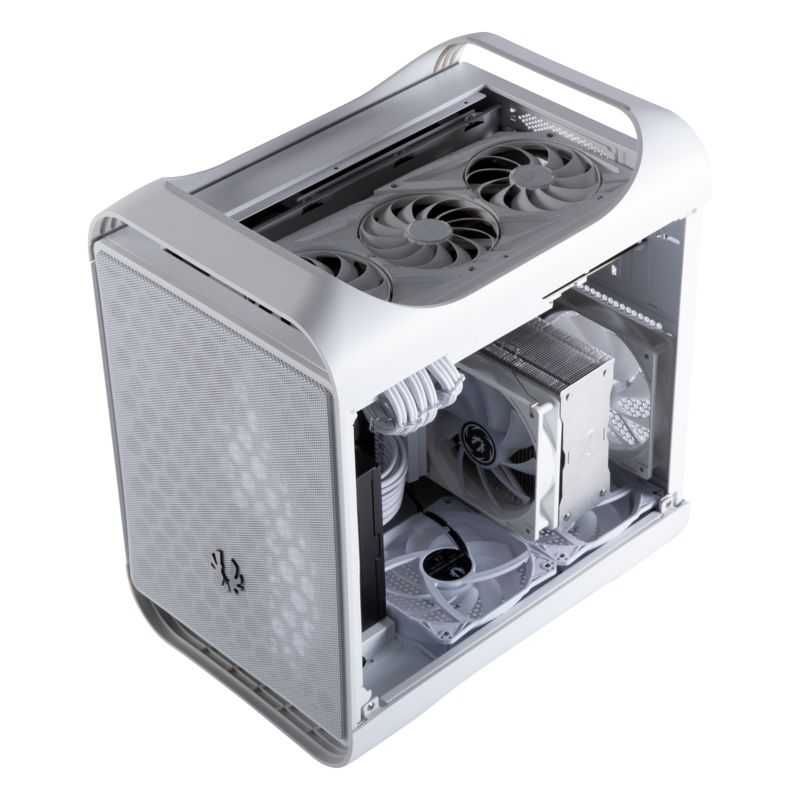
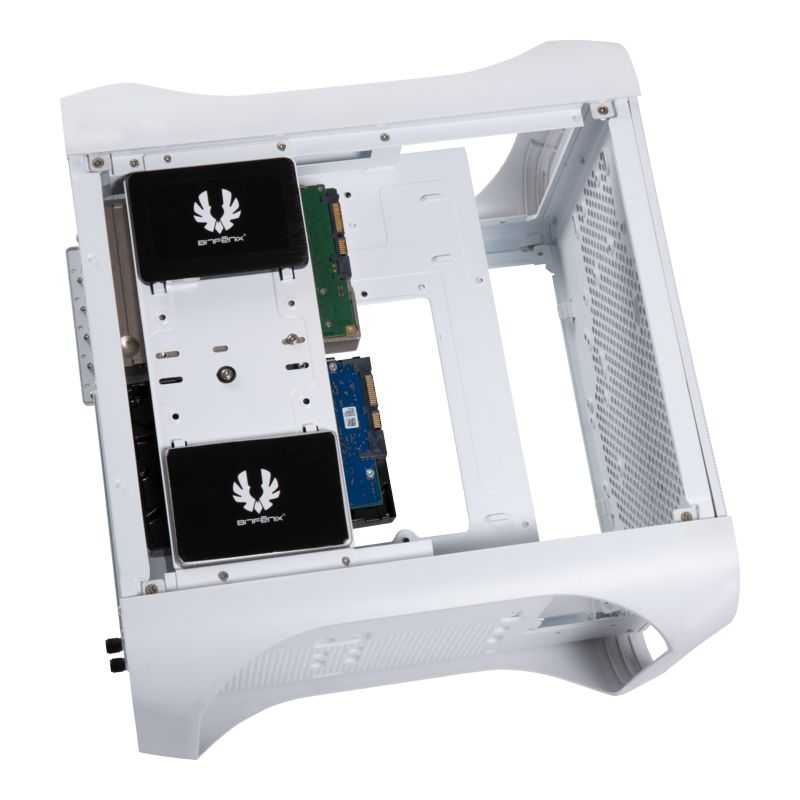
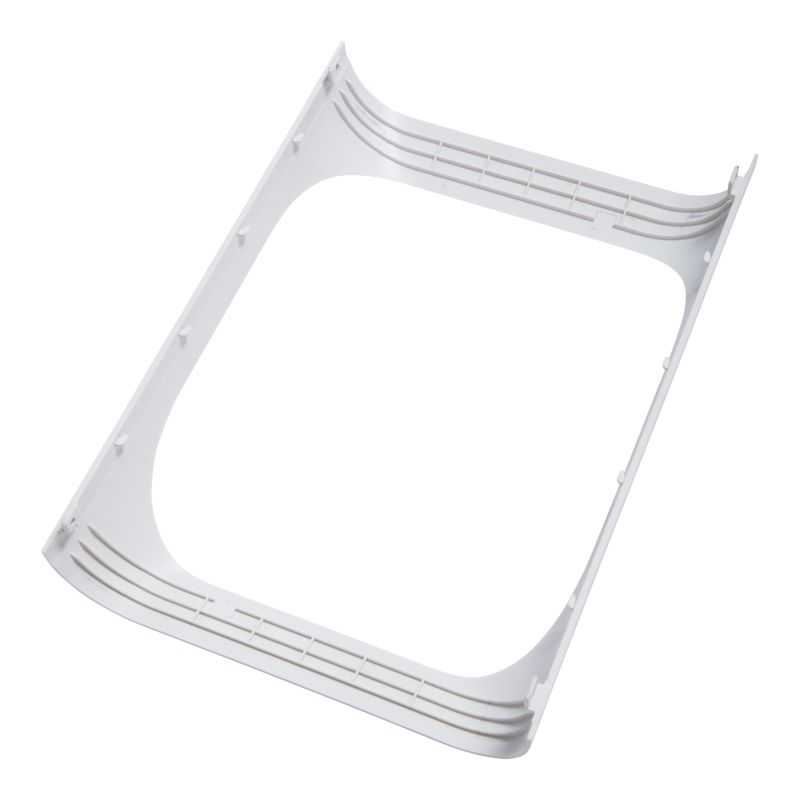
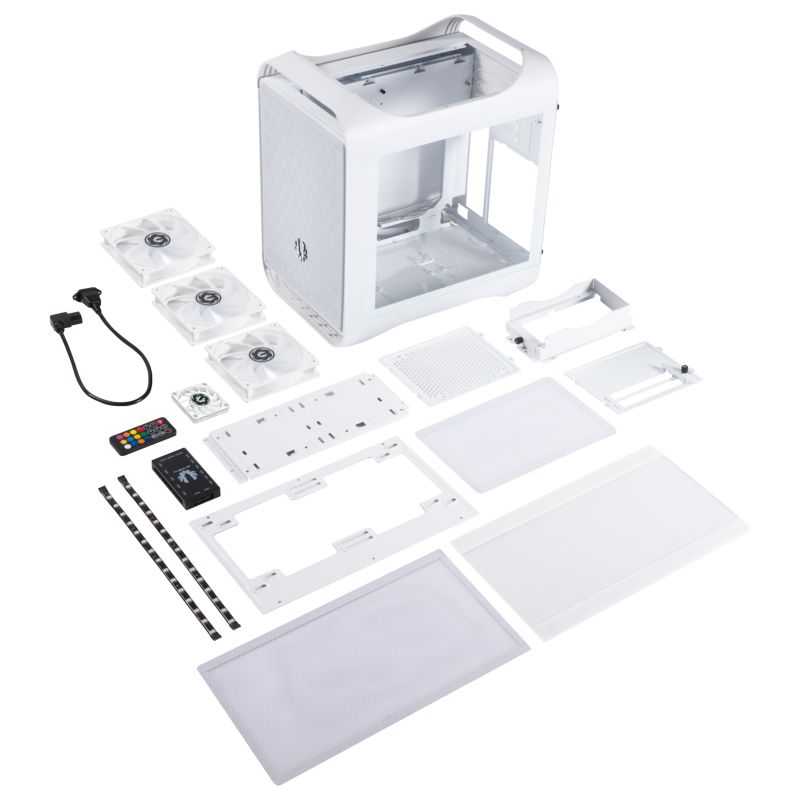
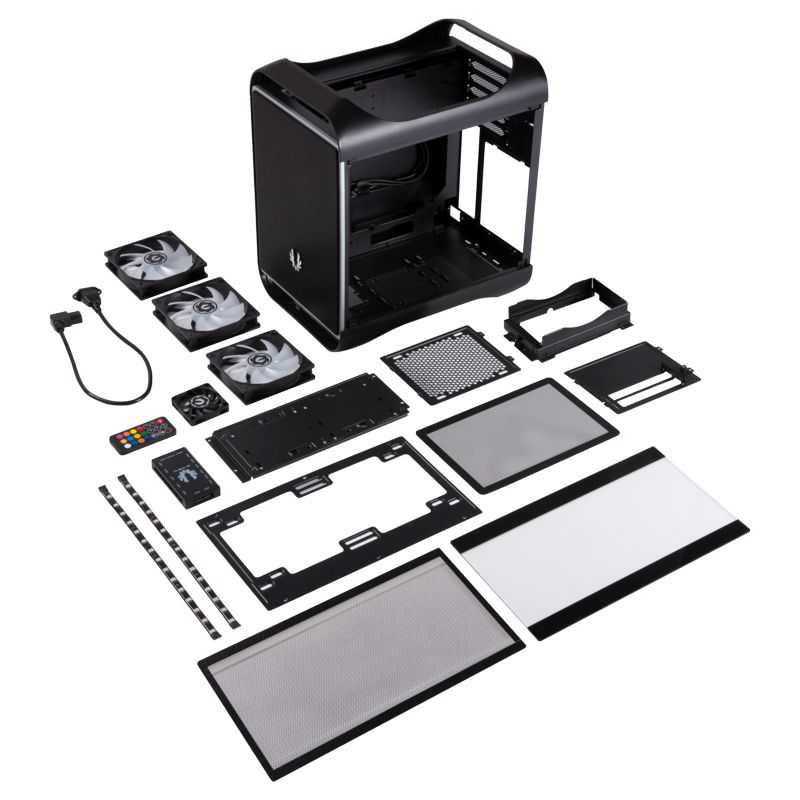
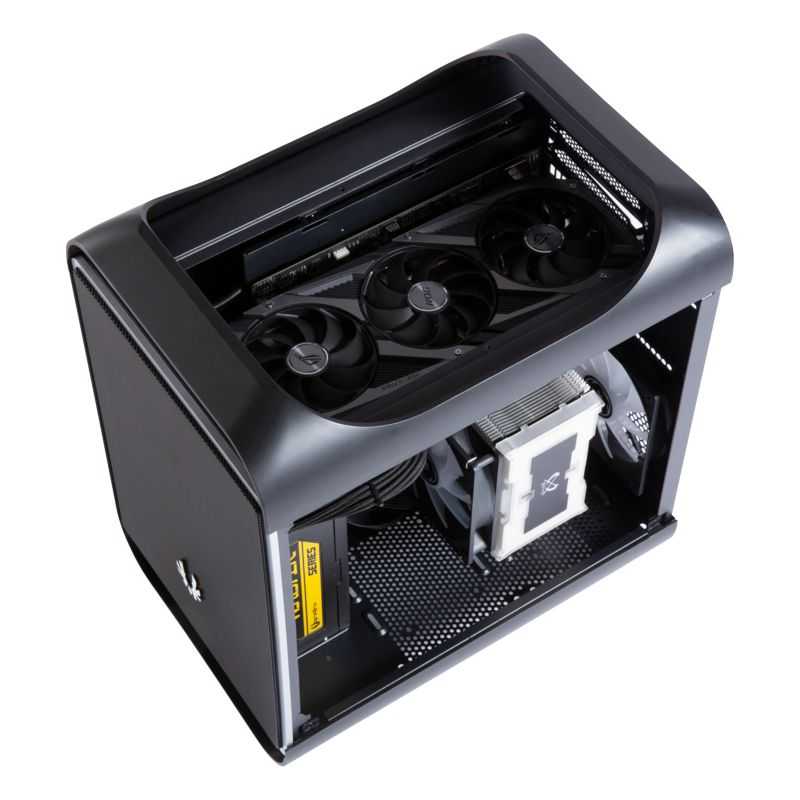
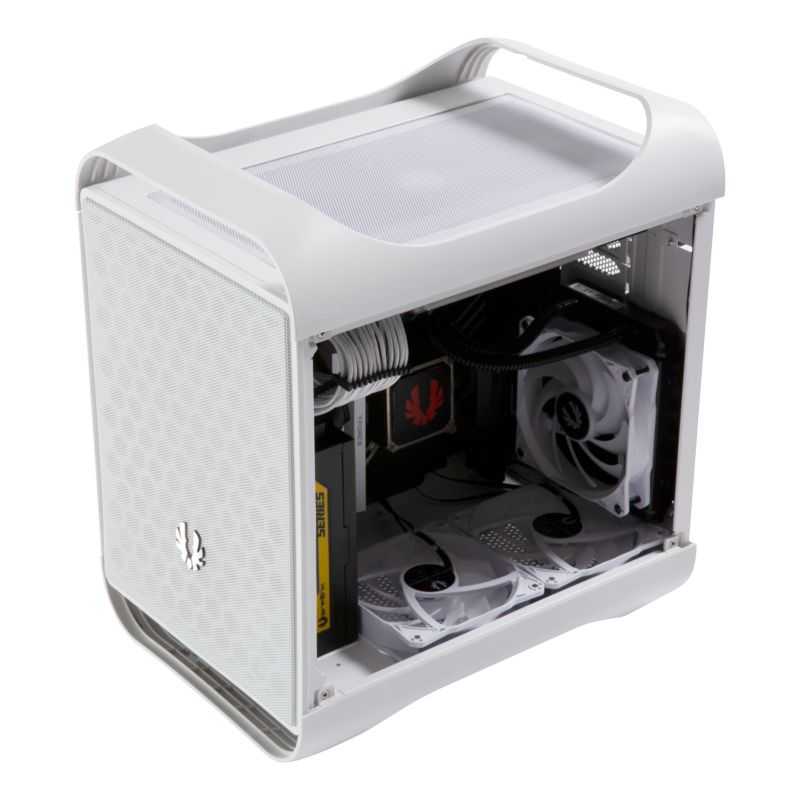
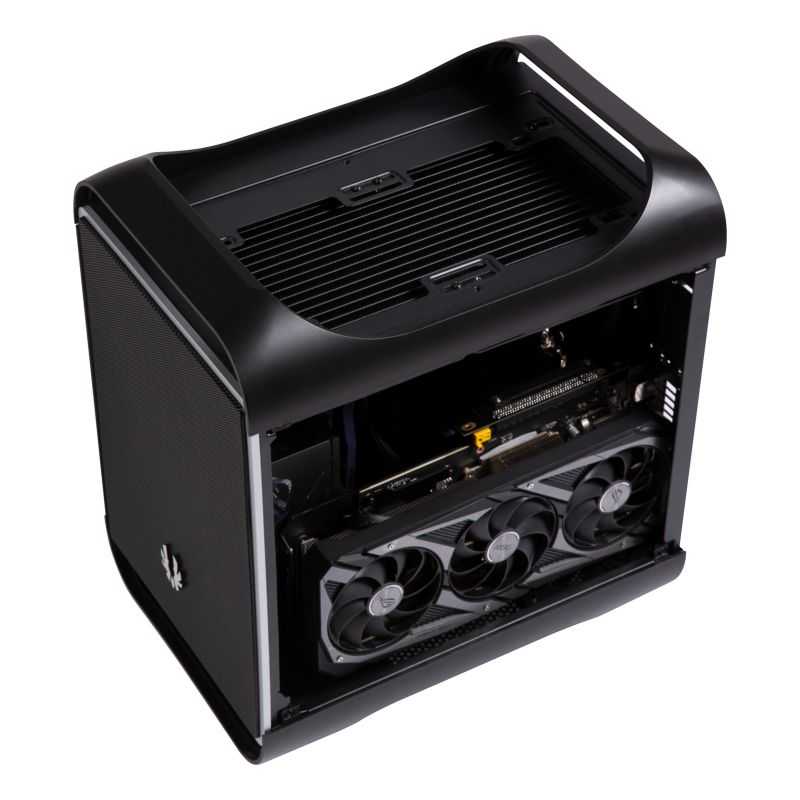
Самая интересная особенность — расположение портов ввода-вывода в серии BitFenix Prodigy M. Компания разместила порты ввода-вывода сбоку от корпуса, чтобы упростить использование и повысить эффективность. Как и в большинстве новых корпусов, компания предлагает «один порт USB 3.2 Gen 2 Type-C вместе с двумя портами USB 3.0 Type-A, которые обеспечивают высокоскоростное подключение на кончиках ваших пальцев, в то время как стандартные 3,5-миллиметровые аудиоразъемы».
PRODIGY M BUILD GUIDE:
- CPU: Intel Core i5 3550
- Motherboard: Gigabyte G1.Sniper M3
- Video Card: HIS HD 7950 IceQ X2 Boost Clock
- RAM: Avexir Blitz 1.1 16GB 1600Mhz (L337 Edition)
- HDD: 500GB WDC Blue SATA III
- Cooler: Antec Kuhler H2O 620
- Fan: 2 X 120mm and 1 X 140mm Bitfenix Spectre Pro LED
I usually install the CPU, RAM and the cooler bracket to the motherboard before installing it to the case. It is easier for me to install everything with the board outside of its chassis.
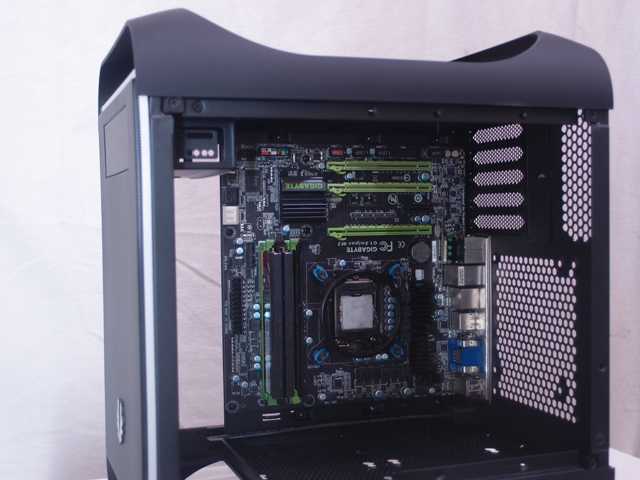
Ample amount of thermal paste is enough for your CPU. Adding more might cause you problems with heat dissipation and leaving your CPU socket messy.
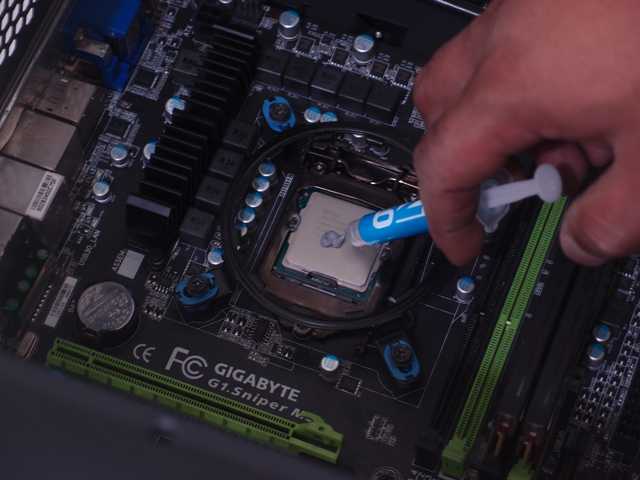
Now, install the rest of your cooler. You can install it on the top or bottom part of your Prodigy M but the most convenient place I see is at the rear since it is the one nearest to the CPU and for the tube not to mess with other parts. Install the radiator fan aiming towards the radiator to push heat outside of the PC.
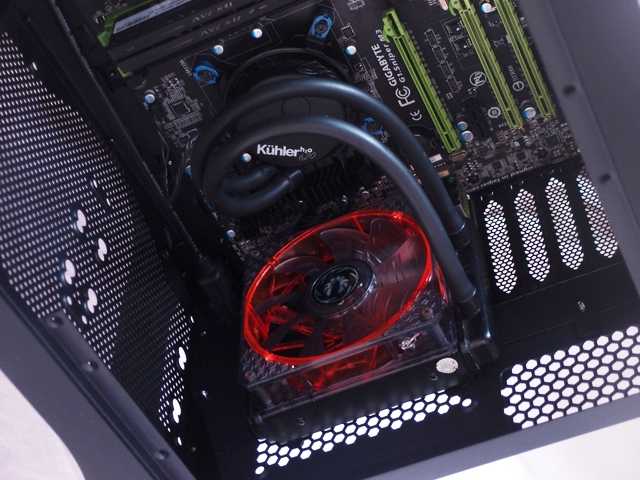
The BitFenix Prodigy comes with a removable PSU bracket for easier PSU installation.
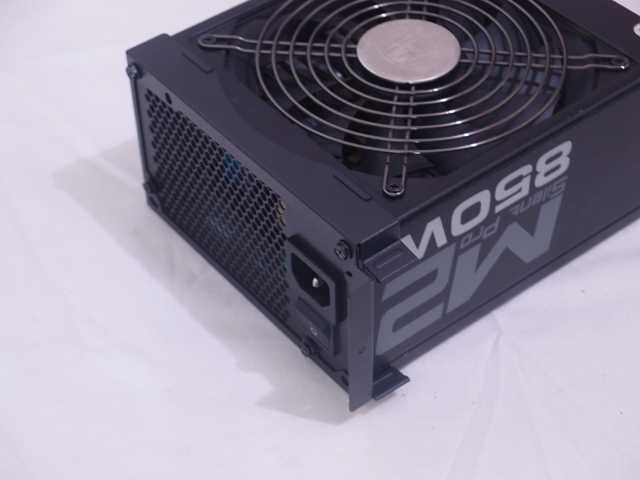
BitFenix Prodigy M Review: Conclusion
I consider a PC case as a matter of personal preference. There is no one size fits all solution since each people has different taste and different needs. However the BitFenix Prodigy M does come with an attractive looking outer design. It has the style and it can be carried around easily thanks to its FyberFlex Composite handles. There are several things that I like and dislike about the case.
First of all, I like its nice look and the smooth finish on the handles. But I would prefer those handles to be sturdy and solid, instead of being flexible. It’s great that there are 5 expansion slots so that so can install two graphics card, plus you also have an extra slot in case you plan to install additional components like a sound card. It supports large CPU air cooler like the Cryorig R1 Ultimate or Noctua’s NH-D14 or NH D-15. There are anti-vibration rubbers that come with the package for the hard drives. And I like the fact that you have several options to choose from since this is a full pledge micro ATX case.
But what I don’t like about the case is that it is somewhat difficult to install PC components and do a proper cable management specially if you haven’t plan ahead. Like I said during my build, I originally plan to install an HX650, and AIO water cooler together with the Asus R9 290 DirectCU II OC and Maximus VII Gene. But it was just impossible to fit them together, or if I did insist on those components I’m sure I’ll be putting unnecessary strain on the cables and the tubes of the water cooling, which could damage the components. I’m sure this is not the case with the original Prodigy since you will have more room to work with and better compatibility with components since it’s only a mini ITX case.
I’m not particularly concerned with the stock fans since I don’t use stock fans anyway, but I would prefer that the motherboard orientation was not inverted and the front I/O panel was not located in the side panel. And also those thumbscrews, please use an all metal or thumbscrews since it looks better.
Generally the Prodigy M is one solid and quality micro ATX case. The chassis itself, including the side panels are very solid. And with careful plan the benefits will outweigh the issues you might encounter when building with this case. Considering the price and quality that you get, the BitFenix Prodigy M deserves The PC Enthusiast’s Highly Recommended Award.




























